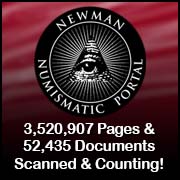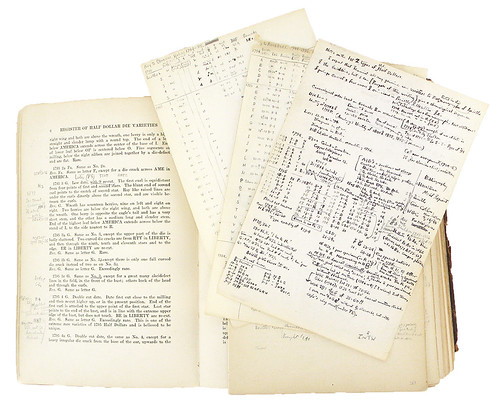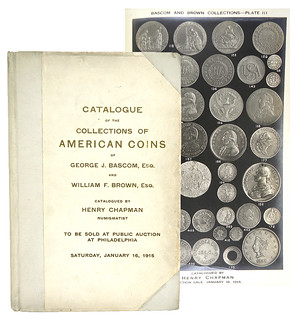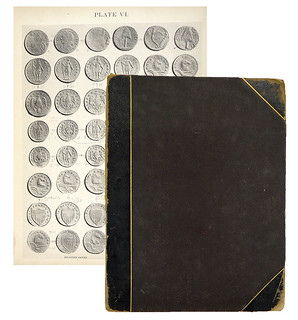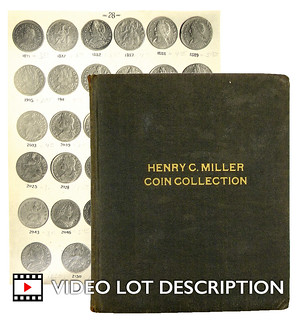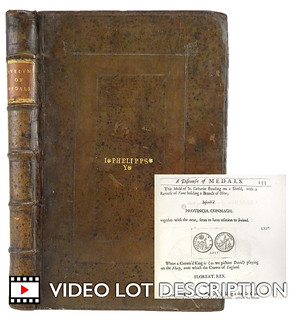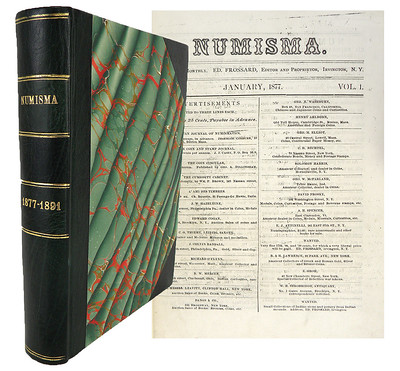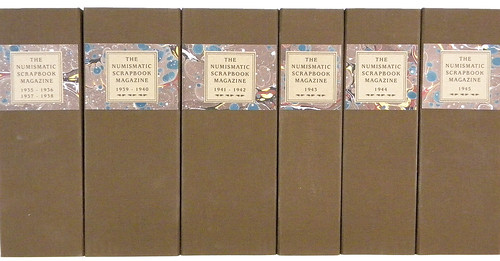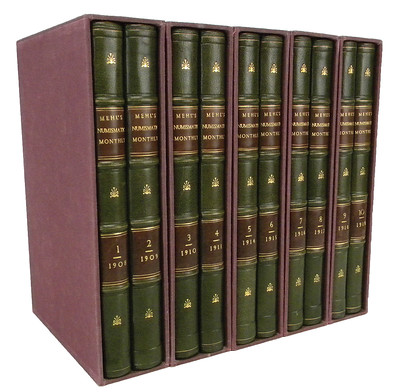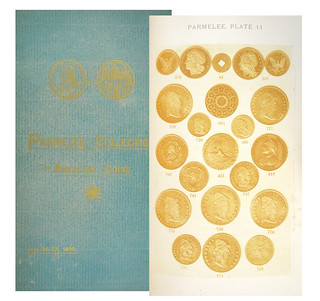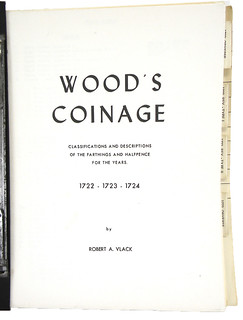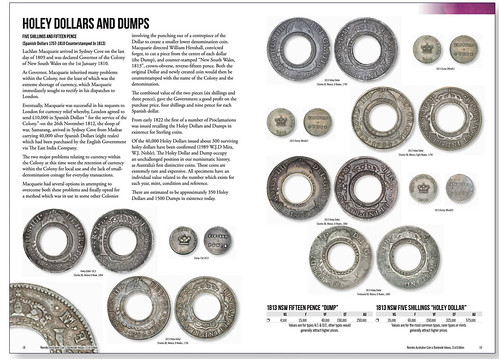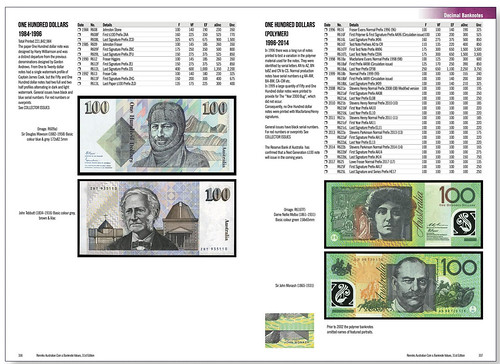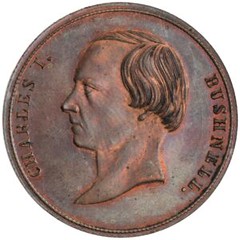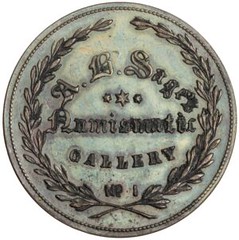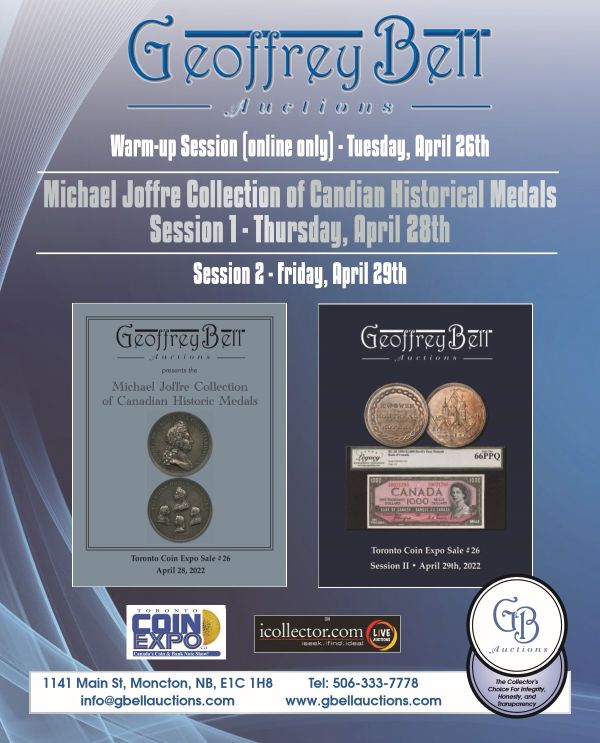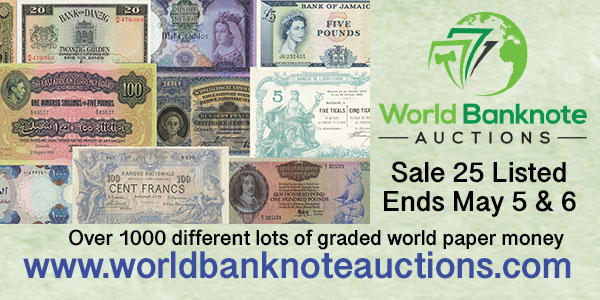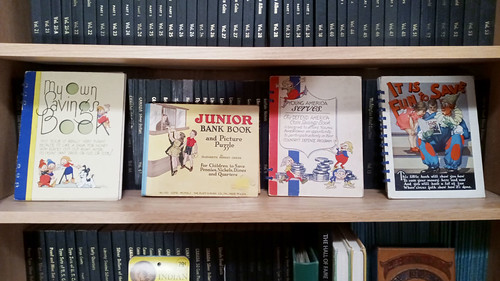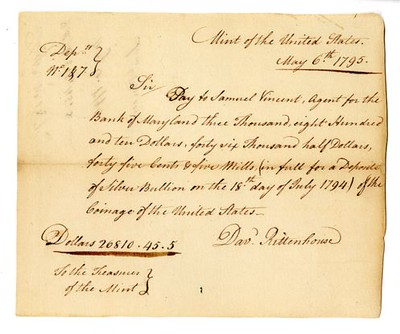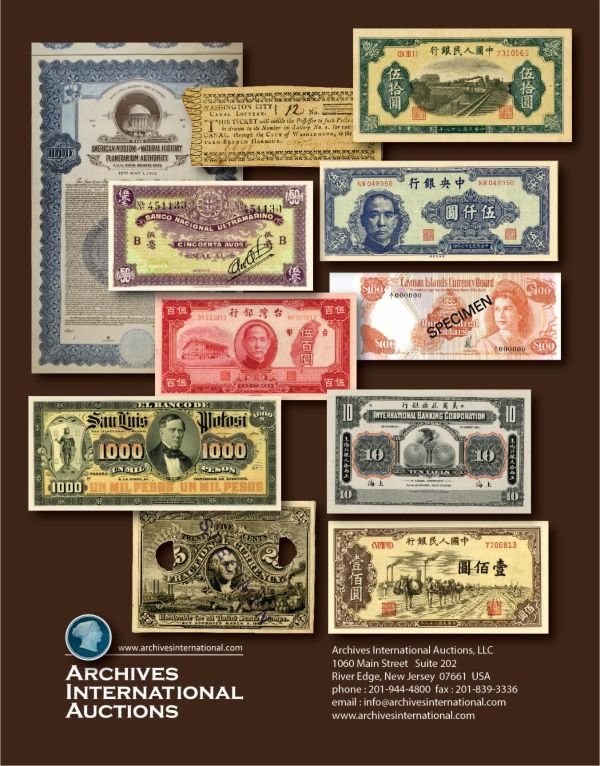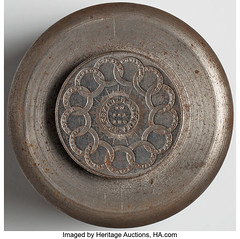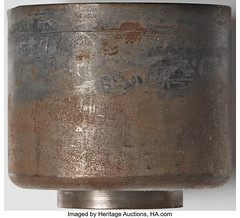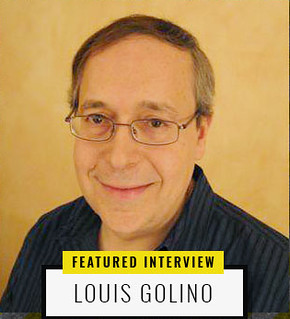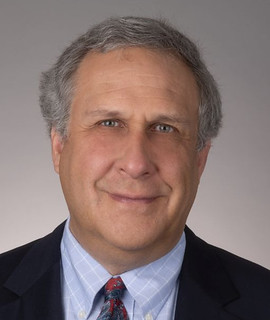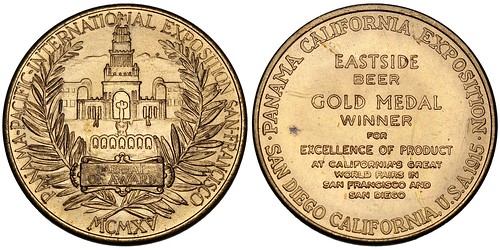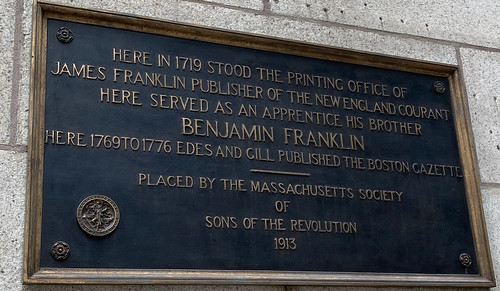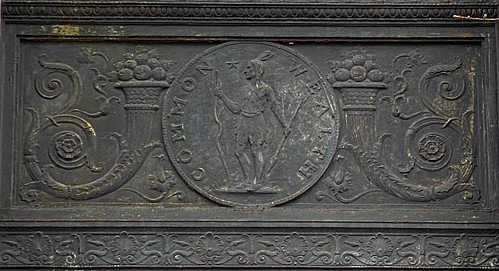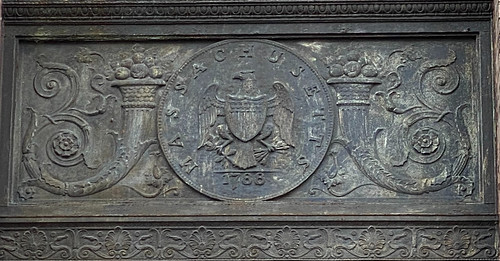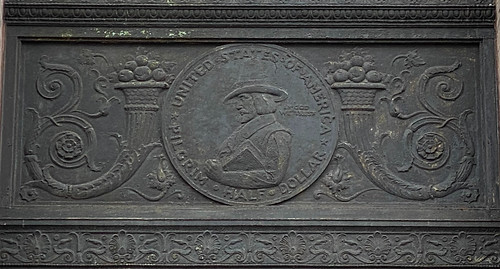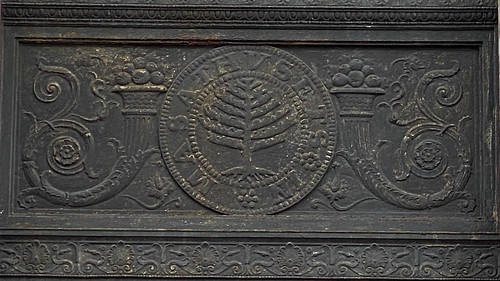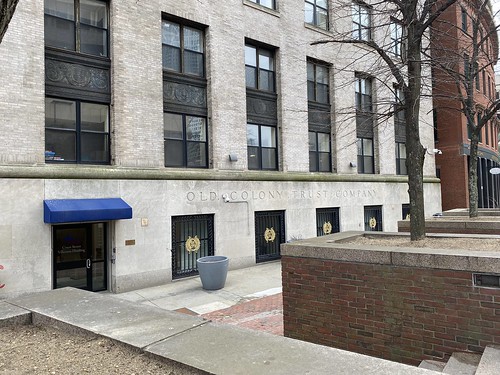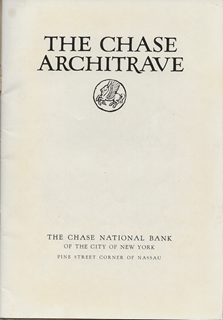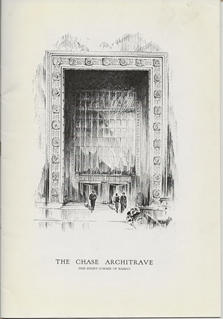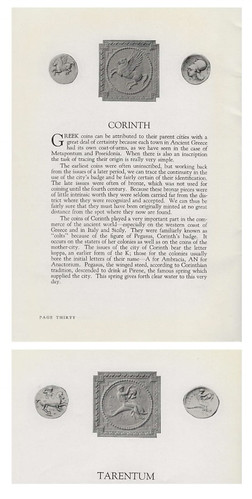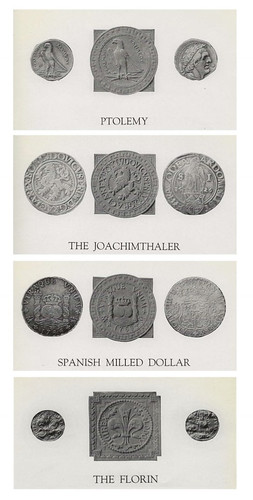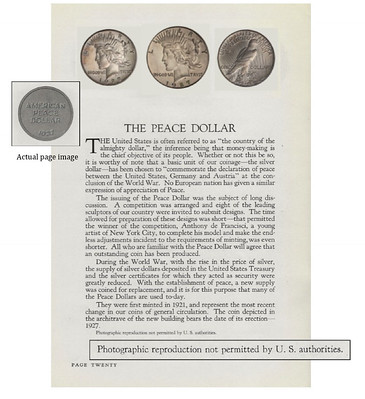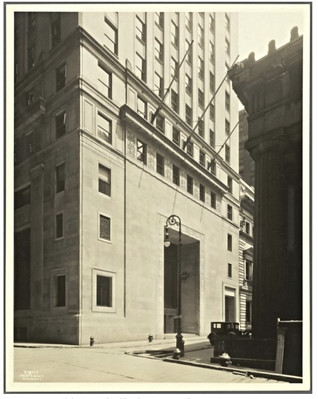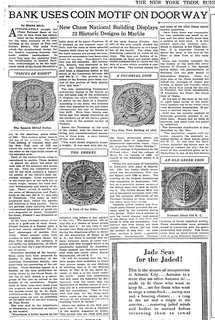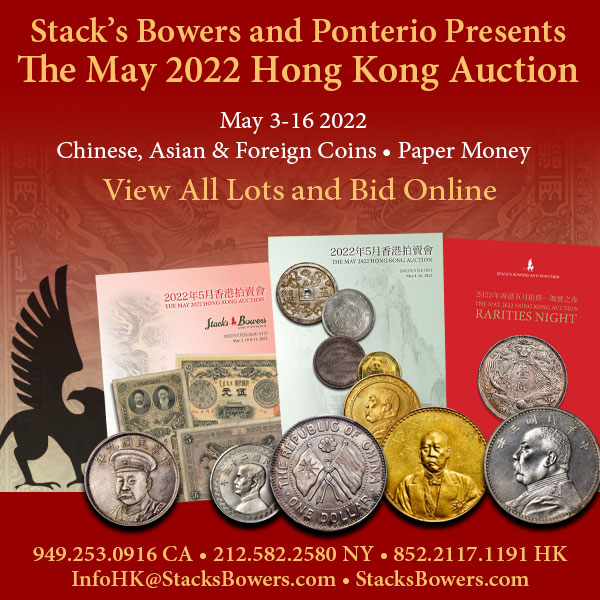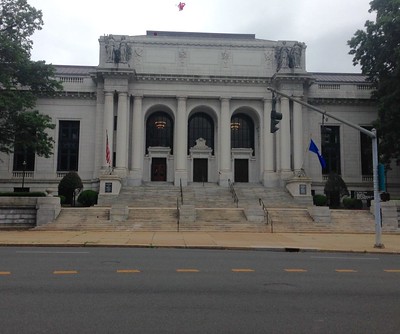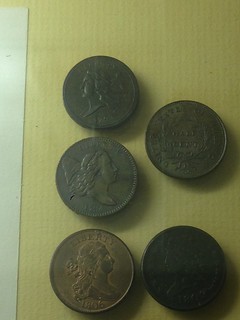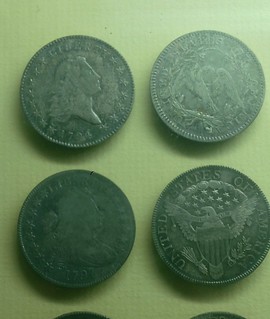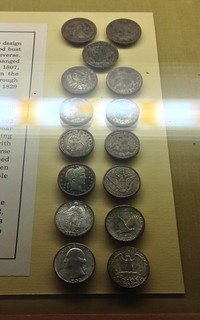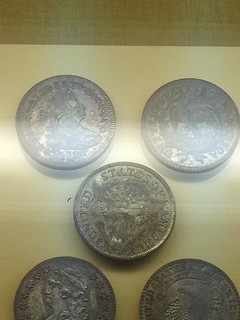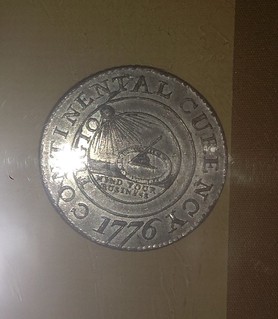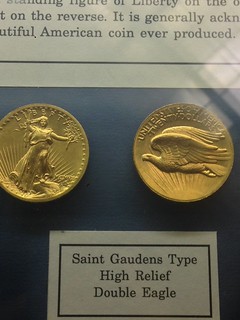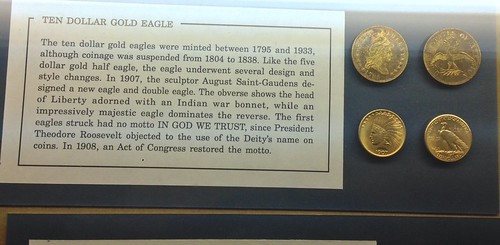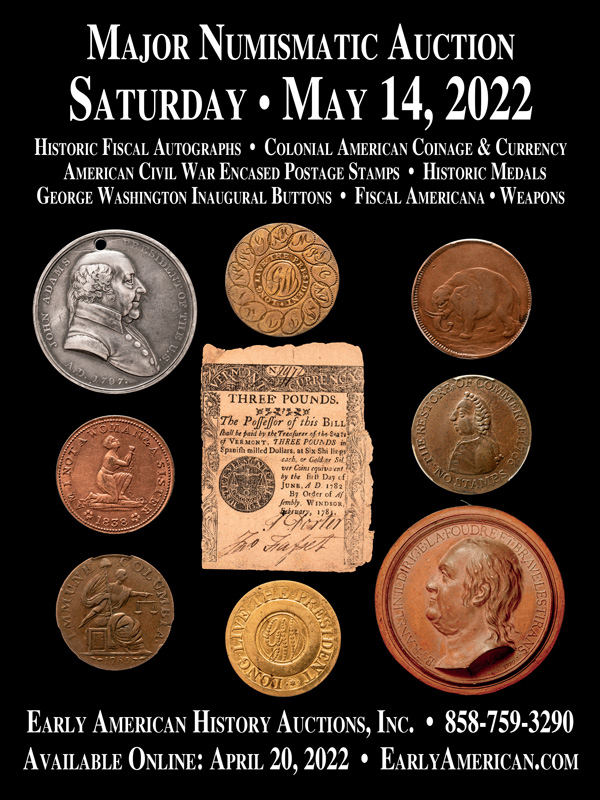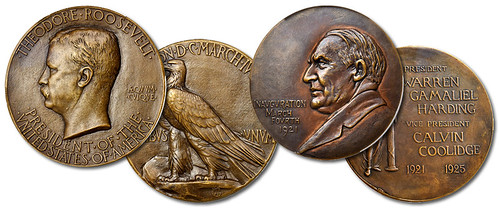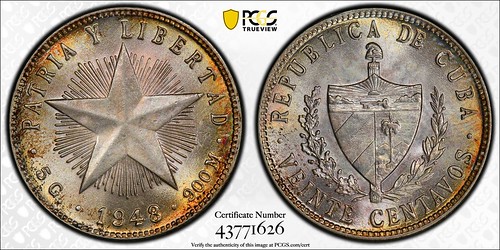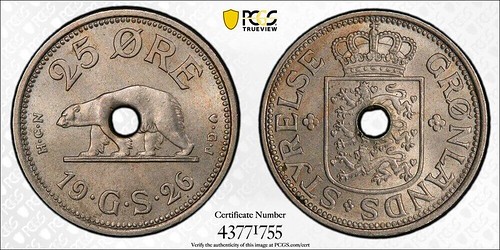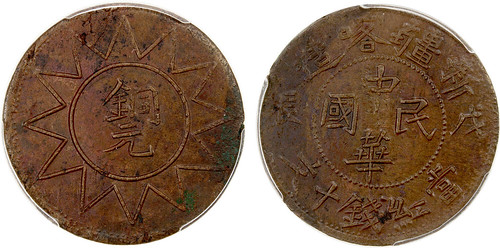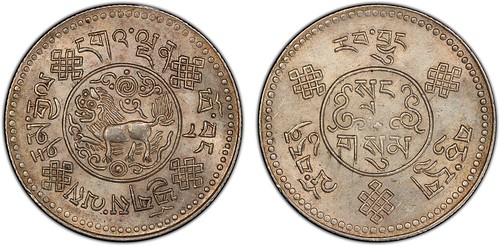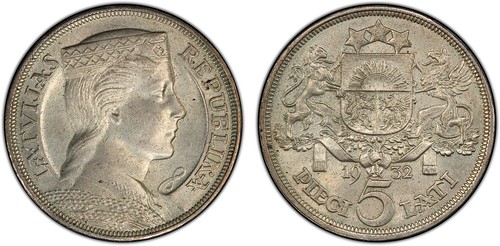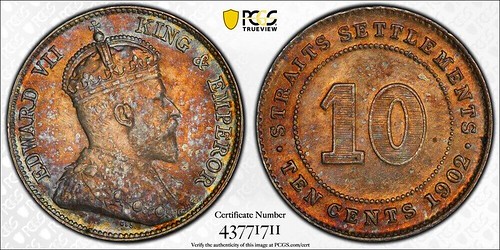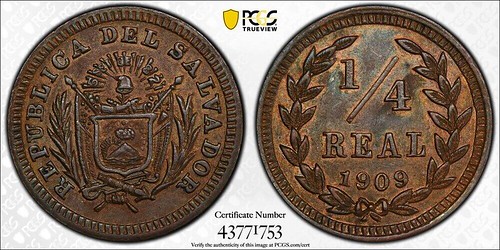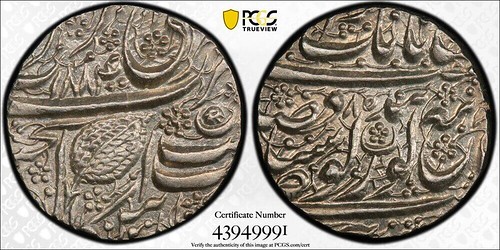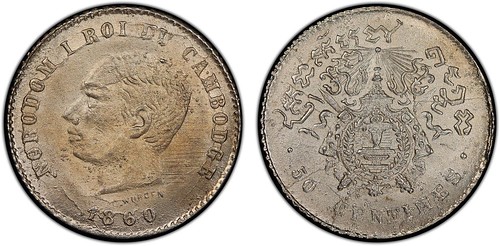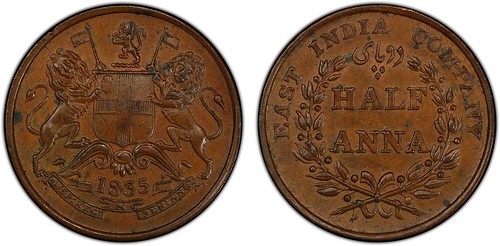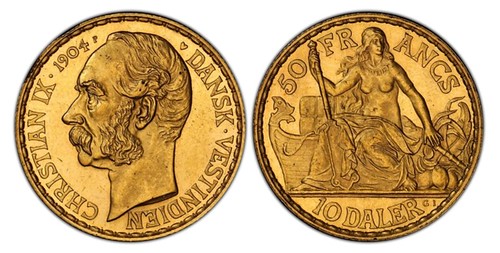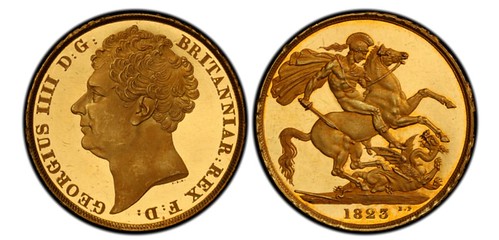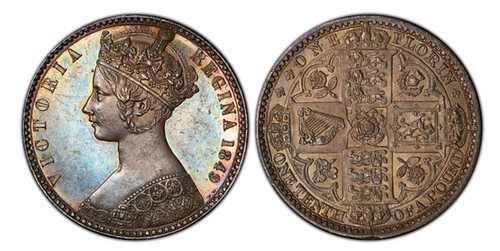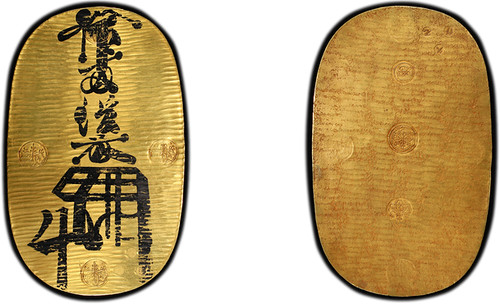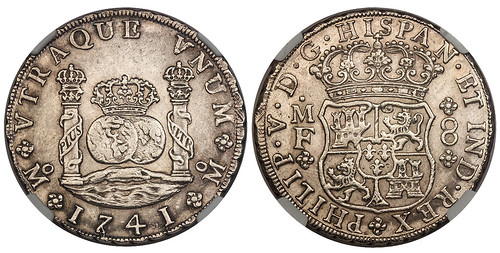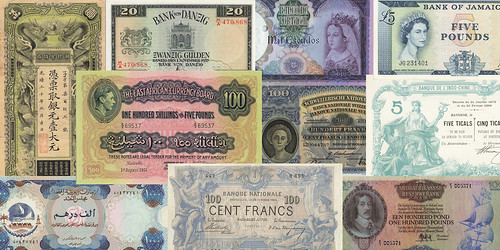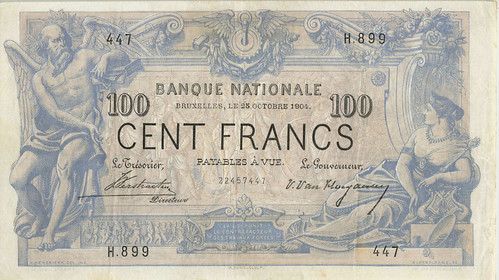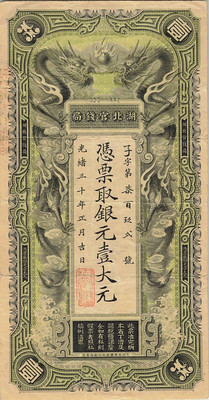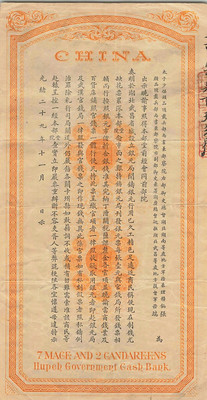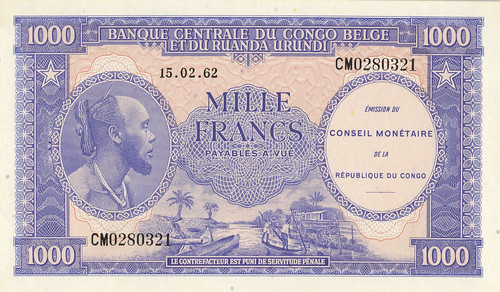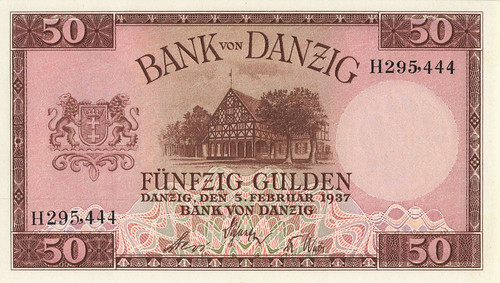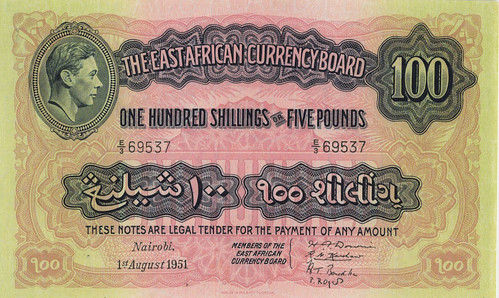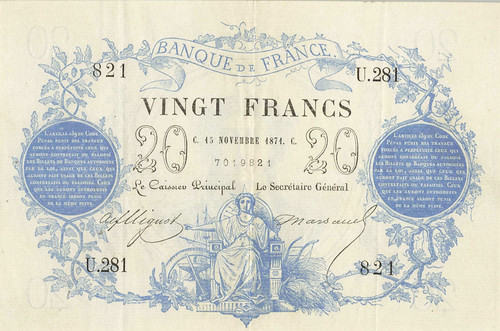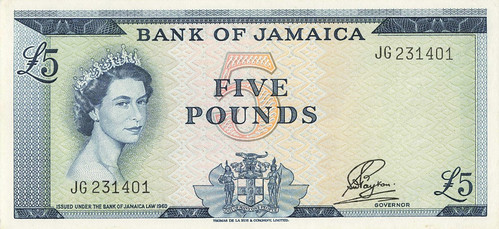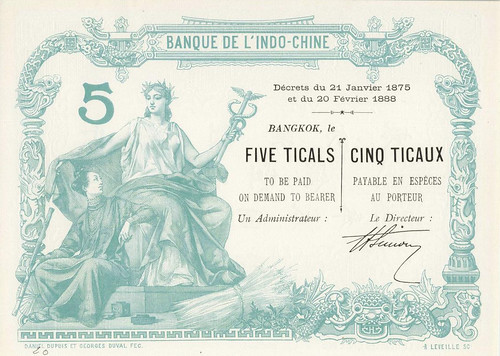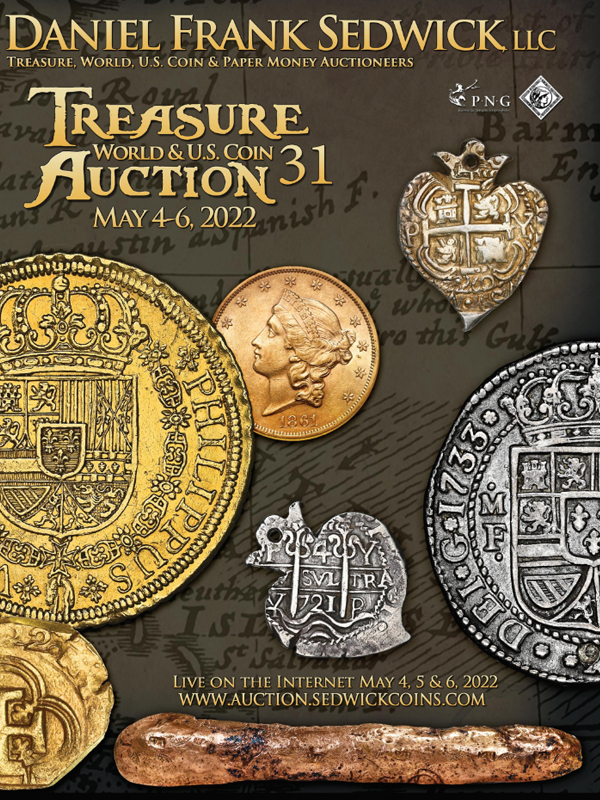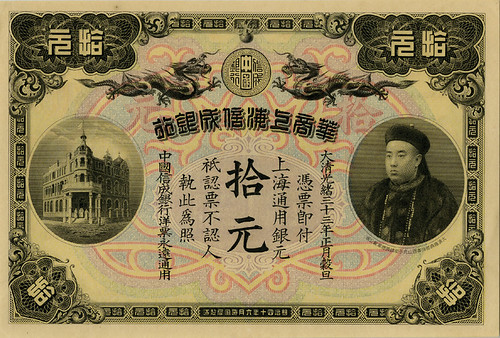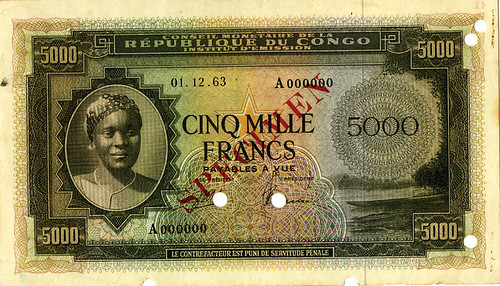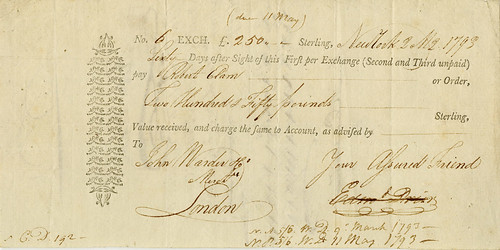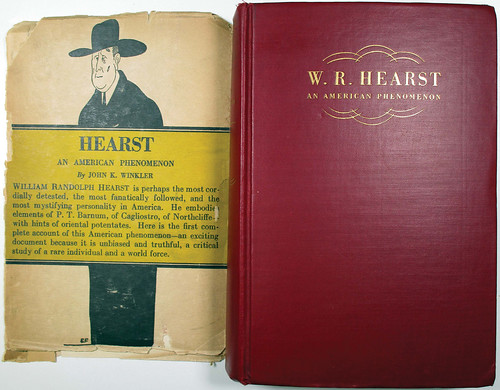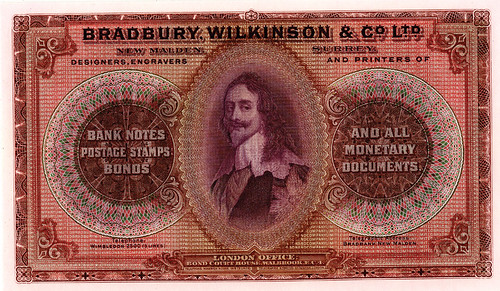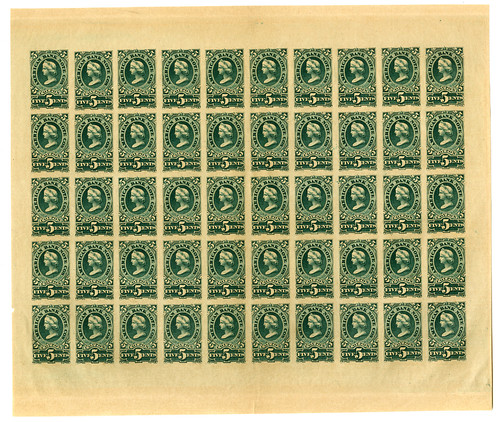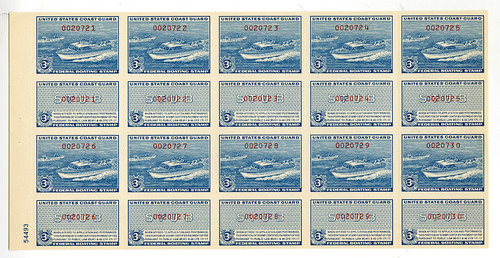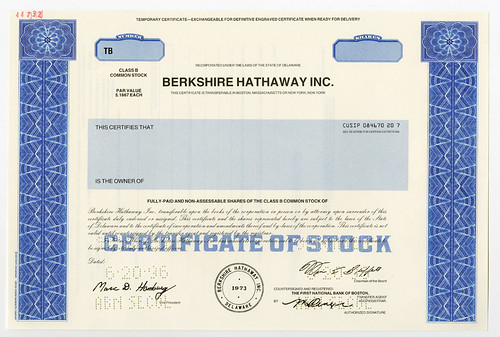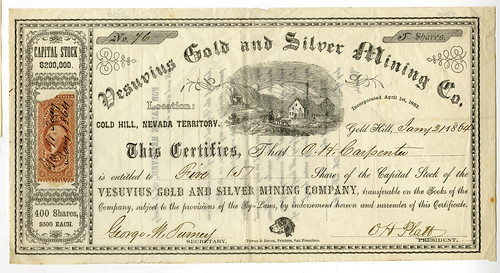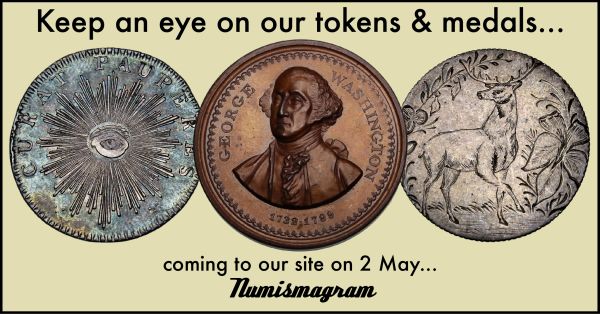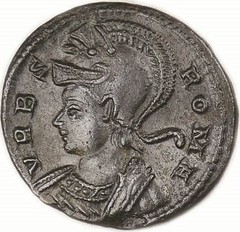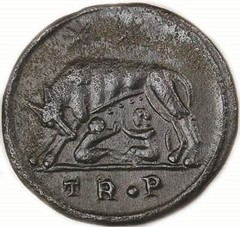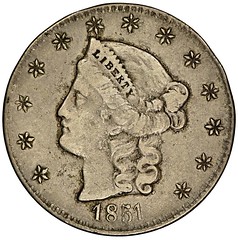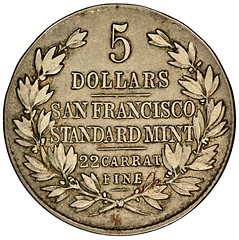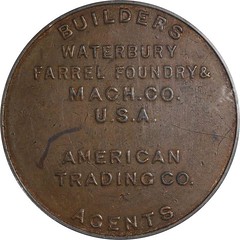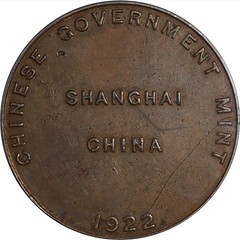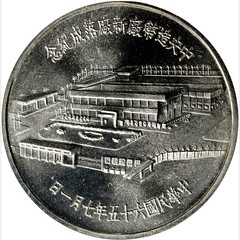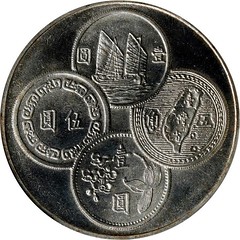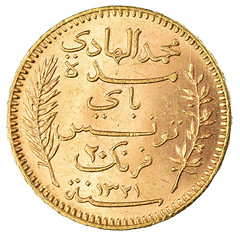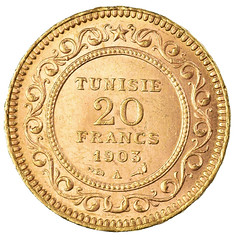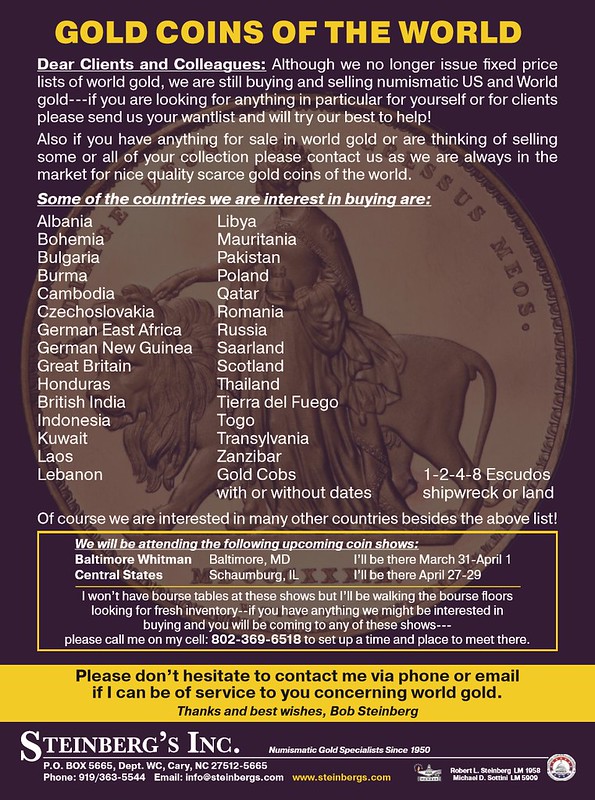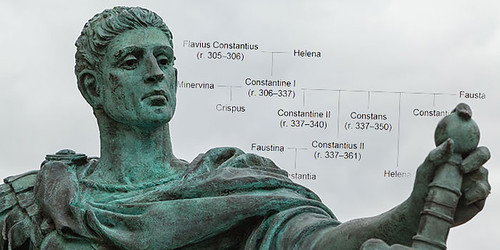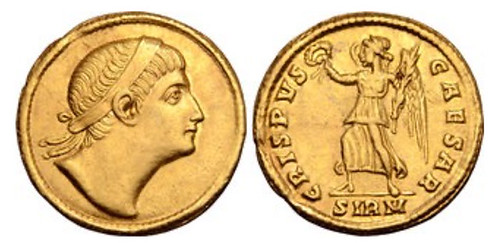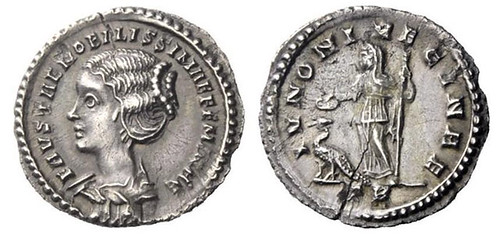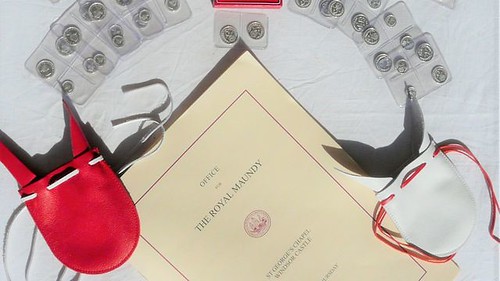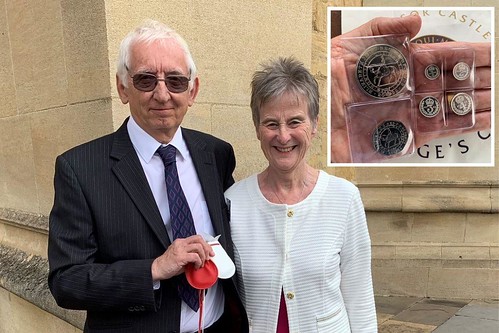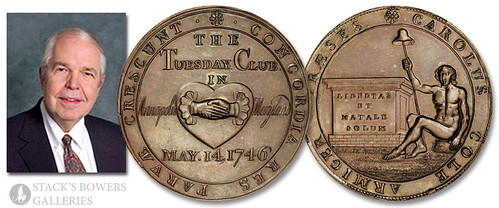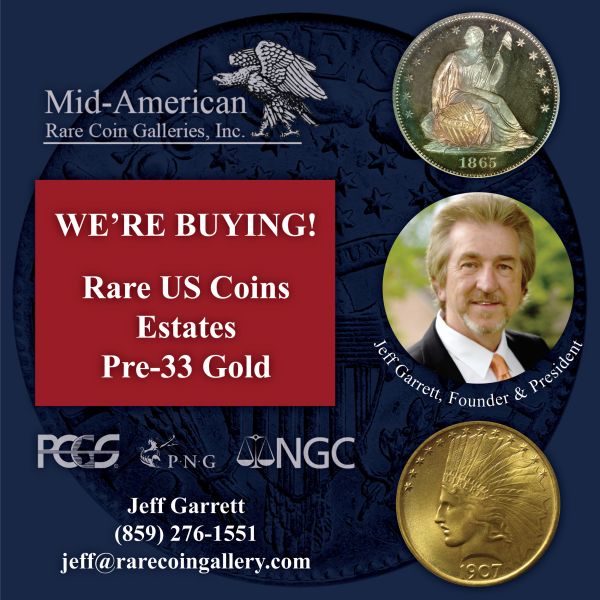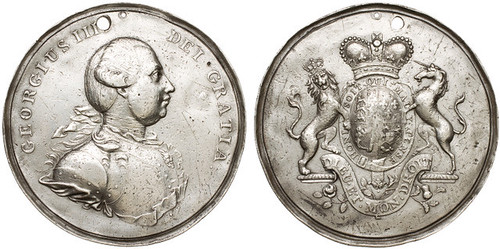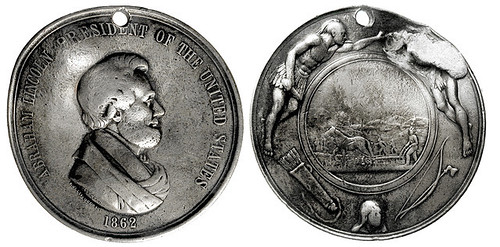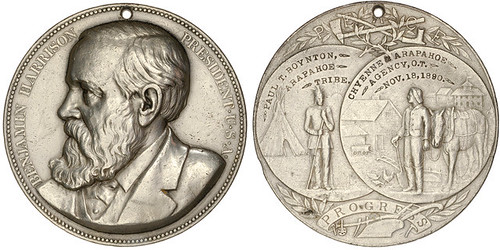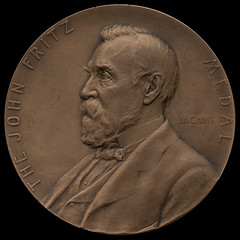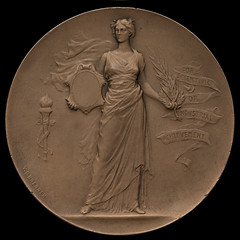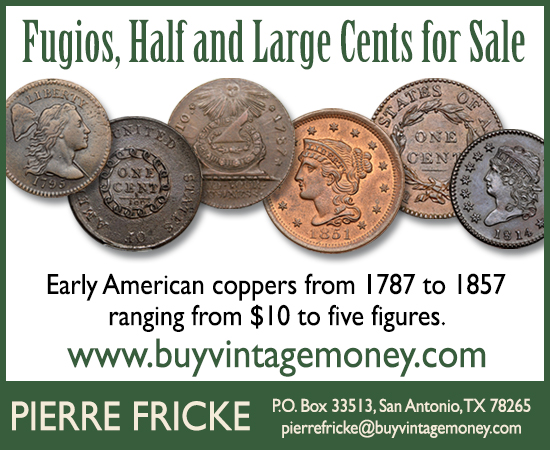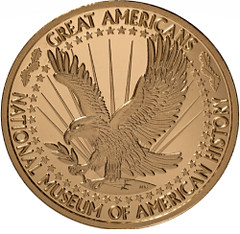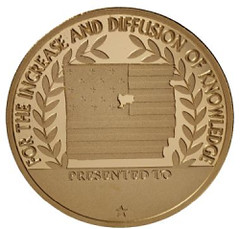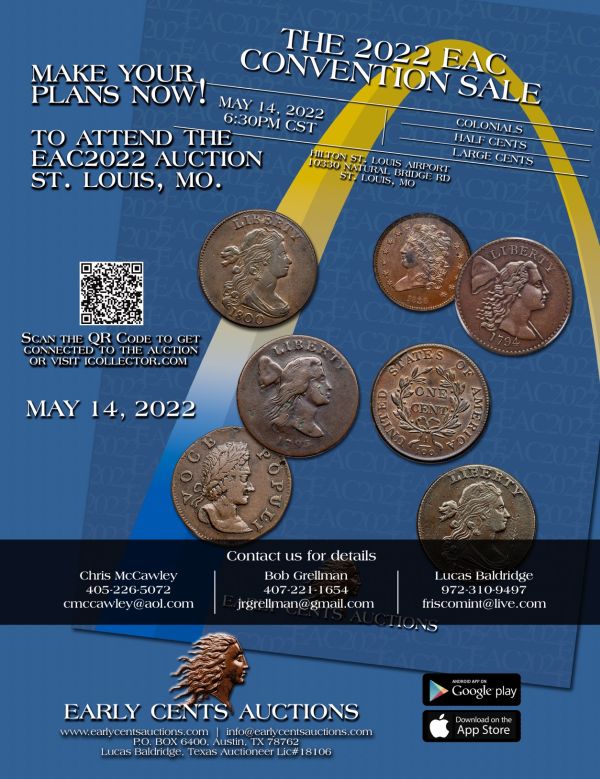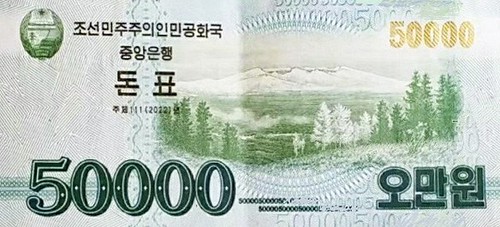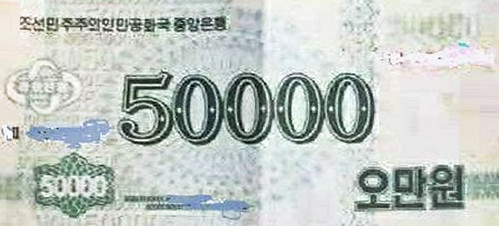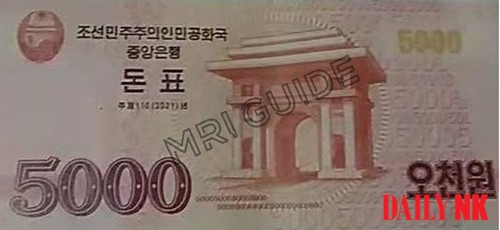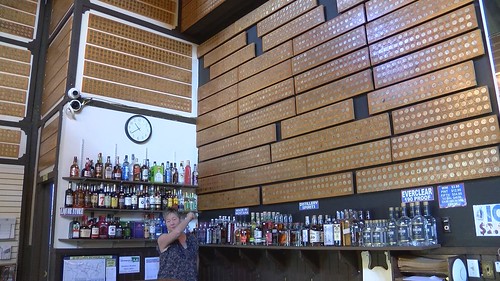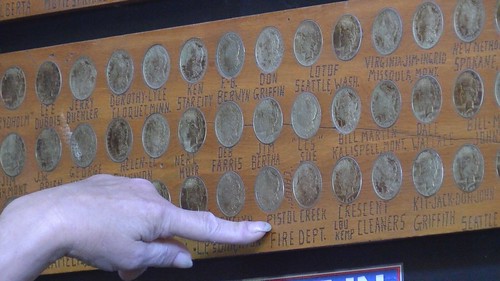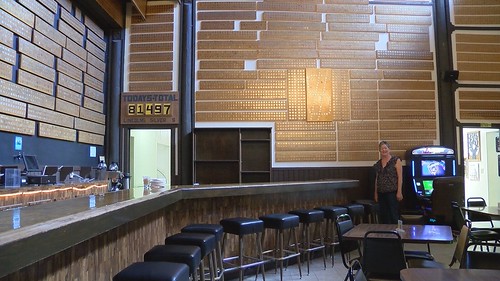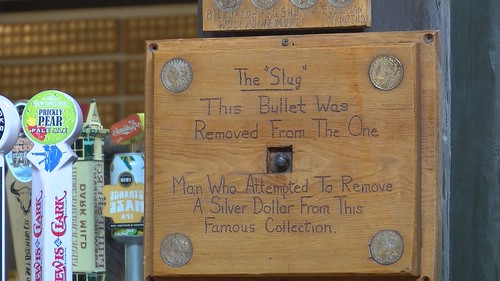
Visit our NBS Sponsors



About UsThe Numismatic Bibliomania Society is a non-profit association devoted to the study and enjoyment of numismatic literature. For more information please see our web site at coinbooks.org SubscriptionsThose wishing to become new E-Sylum subscribers (or wishing to Unsubscribe) can go to the following web page link MembershipThere is a membership application available on the web site Membership Application To join, print the application and return it with your check to the address printed on the application. Print/Digital membership is $40 to addresses in the U.S., and $60 elsewhere. A digital-only membership is available for $25. For those without web access, write to: Charles Heck, Treasurer AsylumFor Asylum mailing address changes and other membership questions, contact Chuck at this email address: treasurer@coinbooks.org SubmissionsTo submit items for publication in The E-Sylum, write to the Editor at this address: whomren@gmail.com BUY THE BOOK BEFORE THE COIN |
- WAYNE'S WORDS: THE E-SYLUM APRIL 24, 2022
- SOME MORE SYD MARTIN LIBRARY SELECTIONS
- NEW BOOK: 2022 RENNIKS AUSTRALIAN VALUES
- NEW BOOK: CATALOG OF POLISH BANKNOTES
- ANS LIBRARY ACQUIRES RARE BUSHNELL VOLUMES
- DR. ROBERT JEFFREY SHALOWITZ (1951-2022)
- LOOSE CHANGE FOR WAR BONDS
- COIN SAVINGS BOOKS FOR CHILDREN
- VIDEO: NETHERLANDS PAPER MONEY FAIR
- DIES FOR U.S. COINAGE ABOARD FRENCH SHIP IN 1782
- DAVID RITTENHOUSE PAPERS DIGITIZED
- NOTES FROM E-SYLUM READERS: APRIL 24, 2022
- OLD COLONY TRUST BUILDING COIN SCULPTURES
- THE CHASE ARCHITRAVE COIN SCULPTURES
- THE MITCHELSON COLLECTION
- PAN CIVIL WAR MONEY & MEMORABILIA SHOWCASE
- VOCABULARY TERM: INAUGURAL MEDAL
- STEPHEN ALBUM INTERNET AUCTION 15 RESULTS
- ATLAS NUMISMATICS APRIL 24, 2022 UPDATE
- WORLD BANKNOTE AUCTIONS SALE 25
- ARCHIVES INTERNATIONAL AUCTION 76
- NUMISMATIC NUGGETS: APRIL 24, 2022
- COINS OF THE FAMILY OF CONSTANTINE THE GREAT
- THE 2022 MAUNDY COINAGE PACKAGE
- THE ANNAPOLIS TUESDAY CLUB MEDAL
- INDIAN PEACE MEDALS AT THE ANS
- THE JOHN FRITZ MEDAL
- THE GREAT AMERICANS MEDAL
- NORTH KOREAN 50,000 WON MONEY VOUCHERS
- MORE DETAILS ABOUT NORTH KOREAN VOUCHERS
- MONTANA BAR FEATURES 80,000+ DOLLARS
Click here to read the thin version on the web
Click here to subscribe
Click here to access the complete archive
To comment or submit articles, reply to whomren@gmail.com
Content presented in The E-Sylum is not necessarily researched or independently fact-checked, and views expressed do not necessarily represent those of the Numismatic Bibliomania Society.
WAYNE'S WORDS: THE E-SYLUM APRIL 24, 2022
 New subscribers this week include:
Roger Mulvaney, courtesy of Tom Mulvaney; and
Yawei Zhang.
Welcome aboard! We now have 7001 subscribers.
New subscribers this week include:
Roger Mulvaney, courtesy of Tom Mulvaney; and
Yawei Zhang.
Welcome aboard! We now have 7001 subscribers.
Thank you for reading The E-Sylum. If you enjoy it, please send me the email addresses of friends you think may enjoy it as well and I'll send them a subscription. Contact me at whomren@gmail.com anytime regarding your subscription, or questions, comments or suggestions about our content.
This was a busy week for me, and a LOT of potential content didn't make it into this issue. If you sent me something and don't see it here, stay tuned - I hope to catch up in the next week or two.
This week we open with more Syd Martin numismatic library selections, two new books, a great acquisition for the ANS library, updates from the Newman Numismatic Portal, and notes from E-Sylum readers.
Other topics this week include Polish banknotes, Bob Shalowitz, David Rittenhouse, War Bonds, dies for early U.S. coinage, more coin sculptures on buildings, the Mitchelson collection, Inaugural medals, auction previews, the Tuesday Club medal, Indian Peace medals, the John Fritz Medal, and North Korean vouchers.
To learn more about the Henry Miller collection, Australian coin values, Charles Bushnell, coin savings books for children, the Netherlands Paper Money Fair, Louis Golino and Dave Wnuck, Kurt Vonnegut's Beer Heritage, the Chase Architrave, the Bank of Danzig, the Great Americans medal, and the 50,000 Silver Dollar Bar, read on. Have a great week, everyone!
Wayne Homren
Editor, The E-Sylum
SOME MORE SYD MARTIN LIBRARY SELECTIONS
Here are some more highlights from the Syd Martin library, being sold by Kolbe & Fanning April 30, 2022. -Editor
Kolbe & Fanning Numismatic Booksellers will be selling the outstanding library formed by Sydney F. Martin on April 30, 2022. The Martin Library is one of the finest formed on the subject of early American coinage, and includes many titles on related areas of European numismatics as well. The sale has been generating considerable interest and promises to be an exciting event.
Some highlights of the sale include:
Lot 31: Walter Breen's extensively annotated copy of Beistle's photographically illustrated work on U.S. half dollars
Lot 100: a rare plated copy of Henry Chapman's 1915 catalogue of the Bascom and Brown collections, featuring colonial, early U.S., and pioneer coinage
Lot 138: Crosby's 1875 classic Early Coins of America, with handwritten annotations by Walter Breen
Lot 162: Tom Elder's 1920 catalogue of the Henry Miller collection, with 28 superb photographic plates illustrating English, Roman and early American coins
Lot 166: John Evelyn's important 1697 Numismata, the first medallic history of England written in English, in a charming contemporary binding
Lot 184: an exceptional original set of Ed Frossard's informative and entertaining Numisma, complete with all supplements
Lot 209: a complete set of the Numismatic Scrapbook Magazine, housed in fifty custom-made clamshell boxes
Lot 264: a beautifully bound complete set of Mehl's Numismatic Monthly, a scarce publication that featured many important articles
Lot 287: a plated copy of the landmark 1890 catalogue of the Lorin G. Parmelee collection, produced by the New York Coin & Stamp Company
Lot 407: Robert Vlack's unpublished foundational work on the William Wood coinage, one of a few copies produced for peer-review and comments.
Register early to bid online
Bids may be placed via post, email, fax or phone, as well as online. Kolbe & Fanning use Auction Mobility as our third-party online bidding platform. Auction Mobility is an app-based platform allowing users the ability to participate in the sale through phones, tablets and computers. To register for the sale, bidders must go to
bid.numislit.com and sign up. Once you have set up an account, you may browse lots, place advance bids, or participate in the live sale online. Those wishing to participate on their devices can download the Kolbe & Fanning app through the Apple or Google Play Store. The sale is also listed on
Biddr and NumisBids.
The printed catalogue of the Martin Library has been mailed to all active customers on our mailing list. As international mail speeds have been slow in recent months, we encourage our international clients to consult the electronic catalogue in case their printed catalogue does not arrive promptly. A PDF of the printed catalogue has been posted to our main website at numislit.com for those who prefer that format. Bids placed via post, email, fax or phone must be received by Friday, April 29, the day before the sale, in order for them to be processed. Advance absentee bids may also be placed at any time online at bid.numislit.com. Live internet bidding will be available during the sale itself through the same platform.
Kolbe & Fanning Numismatic Booksellers LLC is a licensed and bonded auction firm in the State of Ohio. For more information, please see the Kolbe & Fanning website at numislit.com or email David Fanning at df@numislit.com. To register for the sale, go to bid.numislit.com. We look forward to your participation.
To view the catalog PDF, see:
https://www.numislit.com/images/upload/kolbefanningsale163.pdf
To read the earlier E-Sylum articles, see:
KOLBE & FANNING SYD MARTIN LIBRARY SALE
(https://www.coinbooks.org/v25/esylum_v25n14a02.html)
KOLBE & FANNING SYD MARTIN LIBRARY SELECTIONS
(https://www.coinbooks.org/v25/esylum_v25n15a02.html)
MORE SYD MARTIN LIBRARY SELECTIONS
(https://www.coinbooks.org/v25/esylum_v25n16a02.html)
NEW BOOK: 2022 RENNIKS AUSTRALIAN VALUES
The new 2022 edition of Renniks Australian Coin & Banknote guide is available for preorder. Here's information from the publisher's site. -Editor
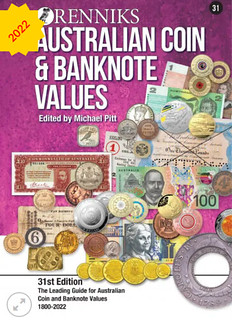 Renniks Australian Coin & Banknote Values 31st Edition
Renniks Australian Coin & Banknote Values 31st Edition
Australia's leading numismatic guide.
Pre-Order Now.
Available 1st June 2022, in Hardcover ($54.95) and Softcover ($44.95)
This comprehensive guide to Australian Coin & Banknote Values contains over 3,850 images and countless thousands of valuations.
A must for all collectors, whether you are just beginning or an advanced collector.
Latest information compiled using weighted averages where possible to ensure the accuracy of pricing.
Quality reproduction of photos makes it easy to identify items. Covered are copper, silver, gold, nickel and allow coins and notes used in Australia from 1800 to present.
Subjects include Pre-Decimal and Decimal currency, as well as privately issued banknotes, war issues, and privately issued tokens.
Also included are latest Royal Australian Mint, Perth Mint & Australia Post Numismatic Covers.
Contains
- 1800-2022
- General Information
- Coin Terms
- Grading Commonwealth coins
- Adjectival Grading System
- Hands on Grading
- Pictorial reference to major grades
- Proclamation Coins United Netherlands – Great Britain – Spain & Colonies – Brazil (Portugal) – East India Company
- Holey Dollars and Dumps 1813 NSW Fifteen Pence Dump & Five Shillings Holey Dollar
- Bullion Act 1852 1852 Adelaide Assay Office Ingots – Adelaide Pounds Port Phillip Gold Pattern Taylor Patterns
- Australian Gold Coinage 1855-1931 Half Sovereigns Sovereigns
- Major Commonwealth coin types Crowns and Commemorative issues Pre-Decimal Coins
- A History of Australian Pre-Decimal Coinage
- Pre-Decimal Pattern Pieces Kookaburra Penny & Halfpenny Square Patterns 1919-1921 – 1918-1920 Patterns – 1927 Patterns – 1937 Patterns
- Pre Decimal Proofs and Patterns
- PreDecimal Varieties
- Decimal Coins
- One cent – Two Cent – Five Cent – Ten Cent – Twenty Cent – Twenty Cent Non-Circulating Legal Tender – Fifty Cents (Circulation Coins) – Fifty Cents Non Circulating Legal Tender – One Dollar Circulating Coins – One Dollar Non Circulating Legal Tender – Two Dollars – Decimal Varieties – Decimal Patterns – Decimal Errors – Unofficial Patterns
- Royal Australian Mint NCLT
- Kangaroo at Sunset Silver Dollars – Silver Commemorative Dollars – Five Dollar Commemoratives – Ten Dollar Commemoratives – Various Commemoratives – Kangaroo Gold Proof Series – Fifty Dollars – One Hundred Dollars – One Hundred and Fifty Dollars – Two Hundred Dollars – Various Commemoratives – Masterpieces in Silver – Royal Australian Mint Sets – Commemorative & Circulating Currency Gold Proof Sets – Sydney 2000 Olympic Coin Program
- The Perth Mint NCLT
- Holey Dollar and Dump Series – Gold Nugget Proof Coins – Prospector Series – Kangaroo Gold Proofs – Kangaroo Platinum Bullion – Platinum Koala Proof Coins – Gold & Silver Koala Collector Coins – Palladium Emu Proof 1995-1997 – Silver Kookaburras – Lunar Series – Discover Australia – The Perth Mint Annual Edition Collector Coins – The Perth Mint Collector Coins – The Perth Mint Collector Coins – Young Collectors Annual Editions – Baby Annual Editions – Privy Marks and Host Coins Philatelic Numismatic Covers RAM & Australia Post PNCs – Perth Mint & Australia Post PNCs
- Tokens
- Private Issue 19th Century Coins
- Internment Camps
- Cocos Keeling Islands
- 1788 – 1829 Currency Notes
- Cheques, Promissory Notes & IOUs
- Bills of Exchange
- New South Wales Colonial Police Fund Notes
- Private Issue Banknotes
- Australia Postal Notes
- Superscribed Banknotes 1910-1914
- Government Issue Banknotes 1913-
- Pre-Decimal Banknotes 1913-1966
- Pre-Decimal Glossary – Banknote Condition Grading – Ten Shillings – One Pound – Five Pounds – Ten Pounds – Twenty Pounds – Fifty Pounds – One Hundred Pounds – One Thousand Pounds – Specimen & Trial Notes – Unissued BankNotes
- Decimal Banknotes
- Decimal Glossary – Banknote Signature Identification Chart: – Portrait identification guide-Decimal – One Dollar – Two Dollars – Five Dollars – Ten Dollars – Twenty Dollars – Fifty Dollars – One Hundred Dollars – Decimal Specimen Notes – Plate Identification Letters – Special Serial Numbers – Banknotes Designs – Decimal Banknote Collector Issues – Commemorative Folders – Special N.P.A Collections – Joint Issue Portfolios – Dated Annual Collector Folders – Annually Dated Sets – Last & First Portfolios-Two Notes – Miscellaneous Note Printing Australia Issues – Uncut Notes – Printing Faults
This publication is a simpli?ed guide showing current values, at date of publication General information on each issue is given but not specialised details such as variations & errors, including multiple modern packaging variations.
Edited by Michael T Pitt
For more information, or to order, see:
Renniks Australian Coin & Banknote Values 31st Ed.
(https://renniks.com/shop/r31/)
NEW BOOK: CATALOG OF POLISH BANKNOTES
This Google-translated article by Wolfgang J. Mehlhausen from Geldscheine Online announces a new edition of a book on Polish paper money. -Editor
Janusz Parchimowicz:
Catalog banknotów polskich iz Polska zwiazanych + polskie banknote 0 Euro 2022
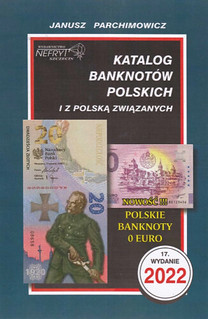 385 pages, each note shown on the front and back,
385 pages, each note shown on the front and back,
Format 12 x 18.5 cm, hardcover,
17th completely revised and supplemented edition, Szczecin 2022,
Price 29.90 euros
ISBN No. 978-83-87355-00-5
The 17th edition of the catalog of Polish banknotes, which is usually revised and supplemented every two years, was published at the end of March 2022. Polish collectors are eagerly awaiting this, because experts estimate that the market prices for paper money have risen even more than those for coins. For banknotes in good condition, prices are already being achieved today that are 100% and far more than those paid around 2020.
On the cover of the book you can see the 20 zloty note on the Battle of Warsaw in 1920, which was issued on August 11, 2020 with a circulation of 60,000. The commemorative banknotes are usually sold out within a few days. At the same time there were 10 zloty silver coins with mintage of only 10,000 copies, some of which are still available at National Bank branches. This clearly shows how important paper money is in Polish numismatics.
As for the 17th edition, the book is obviously much thicker, having grown from 335 to 385 pages, and now has 14 chapters, up from 12 before.
All state banknotes from the Kosciuszko era to the present day are catalogued.
Included are the German issues in both world wars as well as the notes from Danzig. Each note comes with very good color photographs and all the necessary information.
As far as prices are concerned, these are only available for actually existing grades, not in all grades from I to V for every note. The editions from the 18th and 19th centuries are only evaluated in the two levels II and IV (slightly used, more heavily used). Often we find ca, meaning "lover's prize". The banknotes from the 19th century usually only have this information and no prices, because these banknotes are extremely rare and are almost exclusively traded at auctions. Price increases, on the other hand, start on page 45, where the East Darlehnskassenscheine from Poznan can be found. Even with the conditions in III, many quotations are doubled compared to the 16th edition. Even the Danzig 10 million Marek note from 1923, which is in poor condition, has been increased from 800 to 1,800 or 1,300. There are "dream prices" for good condition zloty notes from the interwar period, as well as for Gdansk. Doubling of prices on early PR Poland paper money is the norm, but even 300% is not exceptional, as is the case with the 1948 "red 100" which circulated for a long time and is listed as No. 188 in seven variations. The prices of today's notes in circulation and earlier issues have also been raised considerably.
There are also new variants of banknotes, such as the 500,000 zloty and 1,000,000 zloty 1990 banknotes, where new series are valued separately. Incidentally, there were also drastic price increases here. but even 300% is not exceptional, as is the case with the "red 100" from 1948, which circulated for a long time and is noted as No. 188 in seven variants. The prices of today's notes in circulation and earlier issues have also been raised considerably. There are also new variants of banknotes, such as the 500,000 zloty and 1,000,000 zloty 1990 banknotes, where new series are valued separately.
Incidentally, there were also drastic price increases here. but even 300% is not exceptional, as is the case with the "red 100" from 1948, which circulated for a long time and is noted as No. 188 in seven variants. The prices of today's notes in circulation and earlier issues have also been raised considerably. There are also new variants of banknotes, such as the 500,000 zloty and 1,000,000 zloty 1990 banknotes, where new series are valued separately. Incidentally, there were also drastic price increases here.
The chapters X and XL are brand new, they are called "Banknoty 0 euro souvenir" and "Banknoty pamiatkowe memo euro". These notes were referred to on the cover of the book. Chapter X begins with a surprise. A "real" note for 0 euros 2022 with motifs can be found in a plastic cover. 5000 pieces were printed by her, many of which have now found their way into the books. After all, the chapter extends over 45 pages and, in addition to variants, also shows prices that one can only marvel at.
"Only" 30 zloty (approx. €6.35) is the lower limit for these "0-value" euro notes, which only licensed companies are allowed to produce. They also understand how to incorporate various security features and watermarks perfectly.
To conservative collectors, the fairly large number of "0-collectors" defend their products by noting that the bulk of modern stamps were never printed for franking, were bought and, through various circumstances, became de facto worthless. Chapter XI shows some notes of a Slovak company with "0" as face value.
The test banknotes from the Warsaw paper money printing works are listed in Chapter XIII and have no or unusual denominations.
The new Parchimowicz paper money catalog can only be recommended because of the well-known accuracy in descriptions and real price assessments and the good features. Even in the age of the Internet, it is often quicker to look for and find information in books than on the "net" given the abundance of paper money issues in Poland.
If there are problems in the book and specialist trade, we can help with the procurement of the book: BMV Mehlhausen, 13125 Berlin, Florastraße 24 A. E-mail address: mehlhausen@snafu.de for the price of €29.90 plus 4, 50 € shipping costs.
To read the complete article, see:
Parchimowicz: Neue 17. Auflage des Katalogs zum Papiergeld Polens inkl. 0-Euro-Scheine
(https://www.geldscheine-online.com/post/parchimowicz-neue-17-auflage-des-katalogs-zum-papiergeld-polens-inkl-0-euro-scheine)
ANS LIBRARY ACQUIRES RARE BUSHNELL VOLUMES
An ANS Pocket Change article by librarian David Hill announces their acquisition of a very rare work by pioneering American numismatist Charles Bushnell. Great news! -Editor
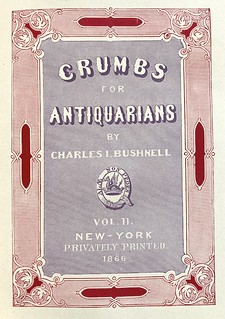 Charles Ira Bushnell had one of the top two or three coin collections in the United States in the nineteenth century. He famously sparred with Augustus Sage, the teenage co-founder of the American Numismatic Society, in the pages of the New-York Dispatch, and Sage later put him on the first token in his Numismatic Gallery series. It was the sale of Bushnell's collection that supercharged the careers of the Chapman brothers of Philadelphia. And now it appears that Bushnell was at the center of what may have been the first numismatic society formed in the United States.
Charles Ira Bushnell had one of the top two or three coin collections in the United States in the nineteenth century. He famously sparred with Augustus Sage, the teenage co-founder of the American Numismatic Society, in the pages of the New-York Dispatch, and Sage later put him on the first token in his Numismatic Gallery series. It was the sale of Bushnell's collection that supercharged the careers of the Chapman brothers of Philadelphia. And now it appears that Bushnell was at the center of what may have been the first numismatic society formed in the United States.
And yet, Bushnell remains a tough figure to pin down when it comes to the facts and details of his life. Apparently, this was even true in his own day. When he died, the editors of the American Journal of Numismatics had hoped to honor him, one of its first subscribers, with a lengthy writeup but were only able to scrape together a few sentences. Even today, with all of the modern research and genealogical records at our fingertips, it can be hard to extract the facts from over a century's worth of repeated errors concerning his life. A little time spent on FamilySearch seems to at least confirm that Bushnell was a New York lawyer and that he and his wife Abby (Little) had a son, Giles, who died in 1906 at 53, and a daughter, Annie, whose death at 17 in 1872, according to Édouard Frossard, caused Bushnell to abandon numismatics. He died 8 years later, aged 59, on September 17, 1880.
Given some of the mystery that still surrounds his life, anything that adds to our understanding of him is welcome, so we are pleased to have acquired Bushnell's extremely rare publication, Crumbs for Antiquarians. In this two-volume set, which shows that his love for history went well beyond numismatics, Bushnell brought together ten booklets self-published by him in limited numbers from 1859 to 1866, which he had distributed to acquaintances. Only one of these, a second edition of his work on New York business tokens, is numismatic, and it is the only one written entirely by him. The rest are the soldiers' memoirs of the Revolutionary War, which Bushnell discovered either as manuscripts or that he found in long-forgotten publications. Bushnell wrote introductions and lengthy notes to accompany the texts, elaborating on the narratives with anecdotes and copious added details—marriage dates, battle casualties, town populations, building measurements—that he extracted from local histories and genealogies.
To Bushnell, these booklets served a moral purpose, reminding readers of the depredations their ancestors had endured as they fought for independence. Very few of the present generation appreciate the sufferings and sacrifices which were made by our forefathers in the war of the Revolution,
he wrote in the introduction to the narrative of Levi Hanford. While we enjoy the blessings which have descended to us, we little think of the immense cost at which they have been obtained.
He wrote these words at the height of the Civil War, and Bushnell, a New Yorker, made sure to credit the soldiers of the South for their role in founding the nation. The deeds of Southern patriots, their valor and their sufferings,
he wrote in the section on Tarleton Brown, have been but little credited.
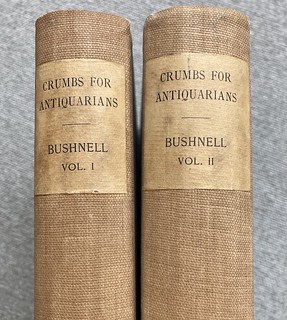 Whatever his motivations for publishing, the Crumbs demonstrate Bushnell's love of American history. After his death, his
Whatever his motivations for publishing, the Crumbs demonstrate Bushnell's love of American history. After his death, his Library of Americana,
was auctioned by Bangs and Co. It included 2,634 books and was particularly strong on the Revolutionary period, Indian wars, and U.S. naval history. He had also collected autographs, engravings, wooden printer blocks done by Alexander Anderson (father of American wood engraving
), and various relics and other curiosities—things like Revolution-era shoe buckles, cloth from a mummy, and bird cages and napkin rings made out of wood salvaged from old churches.
It has been claimed that Bushnell only printed fifty copies of Crumbs for Antiquarians, but given their scarcity today, the real number may have been much lower. We are pleased that one set is now preserved in the ANS Library and we are grateful to David Fanning who contributed to its purchase.
To read the complete article, see:
ANS Library Acquires Rare Bushnell Volumes
(https://numismatics.org/pocketchange/bushnell/)
DR. ROBERT JEFFREY SHALOWITZ (1951-2022)
Large Cent specialist Bob Shalowitz has passed. Here's an excerpt from his online obituary. -Editor
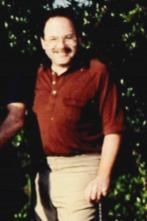 Dr. Robert Jeffrey Shalowitz a.k.a. "Bobby/Poppa Bob/Doc Shal" passed away peacefully Saturday, April 16th, 2022 surrounded by family in his longtime home of Akron, Ohio.
Dr. Robert Jeffrey Shalowitz a.k.a. "Bobby/Poppa Bob/Doc Shal" passed away peacefully Saturday, April 16th, 2022 surrounded by family in his longtime home of Akron, Ohio.
Doc was born March 28, 1951 in Baltimore, Maryland to Florence Guggenheimer and Danny "Sheelds" Shalowitz. He graduated from Northwestern High School in 1969. He attended college at The University of Maryland in College Park and went on to graduate from the University of Maryland School of Medicine, completing his medical residency in OB/GYN at the York Hospital in York, Pennsylvania. While in medical school, he met the love of his life and wife who he was married to for over 35 years, Maureen Anne Shalowitz.
Doctor Shalowitz was an OB/GYN for over 40 years and served the Akron, Ohio and Wheeling, West Virginia communities, among others. He loved working with students and residents and was a teacher and mentor for NEOUCOM and the West Virginia School of Medicine.
Bobby had many passions. He was nationally renowned in rare coin circles. Remarkably, he paid for his medical education by buying and selling coins. He belonged to The American Numismatic Association (ANA) and The Early American Coppers, Inc. (EAC), where he specialized in Large Cents and West Virginia Tokens.
Doc Shal was also an avid golfer. While his stature may not have been intimidating, his score cards were. A favorite story was that once on a golf outing with friends, one of his drives took out a squirrel who dared to wander onto the fairway in front of one of his killer drives.
Poppa Bob had an exceptional memory. His ability to recall precise details earned him the opportunity to be a professional golf course rater of which he was very proud. His passion afforded him the opportunity to play famous courses all over the country, from Pebble Beach to Augusta, and numerous internationally recognized courses. He loved competing in the annual Kiddish Cup tournament and Maccabi Games and he was member of many golf clubs over the years.
Poppa Bob was a true gem. He was very proud of his Jewish heritage and never forgot his Baltimore roots. He never forgave Bob Irsay for stealing the Baltimore Colts away to Indianapolis in the middle of the night. He loved military history, aviation, and Star Trek. He could pick up a guitar and sing you any 60's or 70's song. Doc always knew where to devour Maryland blue crabs and craved getting his seafood fix. He enjoyed attending concerts and Broadway shows and his favorite moments were spent with his four grandsons.
American Numismatic Biographies author Pete Smith provided this remembrance. Thank you. -Editor
When I attended my first Early American Coppers (EAC) convention in 1979, Bob Shalowitz was already a prominent and well-respected member. To the EAC insiders, he was known as The Great Shal.
I will admit I was intimidated by him.
At the time, only a handful of people had assembled a complete collection of early large cents by the 295 Sheldon die varieties. In 1974, while he was in medical school, Bob Shalowitz bought the complete collection assembled by Denis Loring. He then disassembled the collection and sold it off piecemeal. This helped to finance his medical education. Much of this appeared in an ad on pages 196-198 of the July 15, 1974, issue of Penny-Wise.
Bob was known in EAC as a dealer in better grade material. His name will appear in the pedigree of many important large cents. He operated on a plain above my head and I don't recall that I ever bought a coin from him.
In recent years I saw Bob occasionally at the ANA conventions behind the table of David Stagg.
Bob Shalowitz died at home in Akron, Ohio, on April 16, 2022.
To read the complete obituary, see:
Robert Shalowitz
(https://www.legacy.com/us/obituaries/baltimoresun/name/robert-shalowitz-obituary?id=34344586)
LOOSE CHANGE FOR WAR BONDS
The latest addition to the Newman Numismatic Portal is about U.S. WWII Savings Bonds. Project Coordinator Len Augsburger provided the following report. Thanks. -Editor
The Pearl Harbor attack in December 1941 induced a patriotic fervor to support the government in any way possible. For ordinary citizens, one way to do this was to purchase war bonds. The Treasury Secretary Press Releases series, noted in last week's E-Sylum, contains several accounts of this activity. Nellie Tayloe Ross, Mint Director, issued a press release on April 22, 1942, noting that 97% of the Mint workforce was acquiring war bonds via the voluntary payroll deduction plan. The investment was substantial – at the San Francisco Mint employees committed more than one-tenth of their salaries. The Treasury Department suggested that all citizens do likewise.
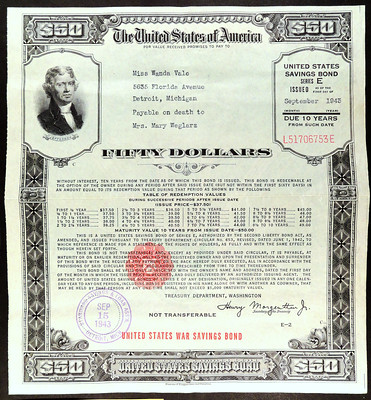 The early 1940s brought a coin shortage to the U.S. (not unlike the same phenomenon during the pandemic), and Mint Director Ross hit upon a two-fer, asking the public, on November 23, 1942, to scour their household depositories for loose change and to trade the coins for war bonds. She cited the case of a guard in the Mint Service who had done precisely the same thing and raised enough - $18.75 - to purchase a $25 bond (bonds matured after ten years).
The early 1940s brought a coin shortage to the U.S. (not unlike the same phenomenon during the pandemic), and Mint Director Ross hit upon a two-fer, asking the public, on November 23, 1942, to scour their household depositories for loose change and to trade the coins for war bonds. She cited the case of a guard in the Mint Service who had done precisely the same thing and raised enough - $18.75 - to purchase a $25 bond (bonds matured after ten years).
On October 13, 1942, Ross went to the well again and tugged at the public heart strings with this press release: A three-year old child turned in 1,875 pennies in the purchase of a War Bond, and … the little girl had 500 more pennies saved toward the next one. Mrs. Ross said she was gratified by the return of the coins to active duty, but she wished the youngster had purchased War Savings Stamps with the other 500.
This author recalls an occasion, c. 1990, when he scoffed at the idea of purchasing U.S. savings bonds (the young man was much more interested in the stock market) and was quickly castigated by a senior citizen, who obviously had lived through World War II and understood the role of public financial support in securing military victory.
Thanks to Roger Burdette for pointing out the collection of Treasury Department press releases available at FRASER, the online Federal Reserve Library.
Roger adds:
"I've noticed that many of the Treasury Press Release volumes include internal correspondence not found elsewhere. There are not public releases, but letters describing financial issues and occurring between Treasury Secretaries and members of Congress and business leaders.
"The metadata is a great start to exploring these materials, but using keyword searches can turn up unexpected benefits."
Image: 1943 U.S. $50 Series E Savings Bond, issued to Wanda Vale, courtesy of Joe Boling
Link to U.S Treasury Press Releases on Newman Portal:
https://nnp.wustl.edu/library/publisherdetail/543206
Link to Treasury Department press releases on FRASER:
https://fraser.stlouisfed.org/title/6111
To read the earlier E-Sylum article, see:
NNP ADDS TREASURY DEPARTMENT PRESS RELEASES
(https://www.coinbooks.org/v25/esylum_v25n16a04.html)
COIN SAVINGS BOOKS FOR CHILDREN
On a related note, researcher and author David Lange submitted these notes about the "Young America Serves" book mentioned in the last issue. -Editor
I spotted the "Young America Serves" book in the latest issue. I have several of these, and they're not particularly rare. I was given one quite a few years ago by someone who believed that it qualified for my collection of coin collecting albums. It's a common mistake made by well meaning individuals, and I've found myself with a wide variety of not-quite-there items.
As sometimes happens, however, I became slightly hooked on this area of collecting, and I now have more than a dozen savings books for children that are similar in concept and construction, though often varying in their graphic design. A few of these have found a place guarding my collection of Library of Coins albums, and I'm attaching a photo. All date to the 1940s, though the cover illustrations reveal that one or two clearly had been in production as early as the 1920s. The Young America Serves was a wartime update to the basic edition seen at the far left. Children were encouraged to save their change to buy war stamps that could later be exchanged for war bonds.
A few years ago you ran photos of a savings book from my collection that still had the original coins hidden under paper strips that, when completed, formed a picture. This feature was included in a very few of these books to dissuade kids from retrieving their pennies, nickels and dimes, as it would damage the complete puzzles. I posed the question to readers of whether I should retrieve the coins myself, now that they were 70+ years old and could include scarce dates/mints. The few responses were in favor of keeping the book intact, with the coins still hidden, and it remains so today.
To read the earlier E-Sylum article, see:
THE DEFEND AMERICA COIN SAVINGS BOOK
(https://www.coinbooks.org/v25/esylum_v25n16a31.html)
VIDEO: NETHERLANDS PAPER MONEY FAIR
These are selections from the David Lisot Video Library that feature news and personalities from the world of coin collecting. David has been attending coin conventions since 1972 and began videotaping in 1985. The Newman Numismatic Portal now lists all David's videos on their website at:
https://nnp.wustl.edu/library/multimediadetail/522852
Here's one on the MIF Paper Money Fair Netherlands. -Editor
CDN Publishing Sponsors MIF Paper Money Fair Netherlands
VIDEO: 2:23.
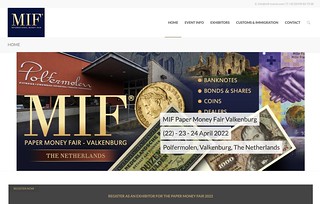 Patrick Perez, VP Development, CDN Publishing,
Patrick Perez, VP Development, CDN Publishing,
David Lisot, Interviewer, CoinTelevision.com. April 1, 2022.
The Greysheet goes international reaching out to sponsor MIF Paper Money taking place April 23-24, 2022. Patrick Perez states he wants to get more in touch with the international paper money market.
David adds:
"This is news from the Whitman Baltimore Coin Expo. CDN Publishing has made a commitment to world banknote collecting. They are sponsoring one of the largest paper money fairs in Europe, the MIF."
An excerpt of the video is available for viewing on the Coin Television YouTube Channel at:
https://youtu.be/Tcr6knbo9Cs
DIES FOR U.S. COINAGE ABOARD FRENCH SHIP IN 1782
Julia Casey submitted this fascinating tidbit about dies for U.S. coinage aboard a French ship in 1782. Thanks! -Editor
Dies Meant to Strike the Morris's First Nova Constellatio Patterns Taken by the British in 1782?
I'm finalizing my article Benjamin Dudley Maker of the Nova Constellatio Patterns,
which will appear in the June issue of the Journal of Early American Numismatics (JEAN). In conducting research on the topic, I came across what I think could be new information from the fall of 1782 regarding the capture of the French frigate l'Aigle.
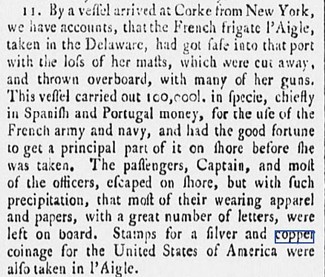 The entries in Robert Morris's diary and supporting documentation have led numismatists to conclude that the dies for the Nova Constellatio patterns were cut in Philadelphia. However, this may not have been the original plan for the mint. British newspapers from the fall of 1782 reported on the September 15th capture by the British of the French frigate l'Aigle after she was run aground on the Delaware River near Philadelphia. The l'Aigle was carrying specie to pay the French army and navy, as well as correspondence, and several French officers. Most of the specie was saved, and the passengers escaped, but it was reported that,
The entries in Robert Morris's diary and supporting documentation have led numismatists to conclude that the dies for the Nova Constellatio patterns were cut in Philadelphia. However, this may not have been the original plan for the mint. British newspapers from the fall of 1782 reported on the September 15th capture by the British of the French frigate l'Aigle after she was run aground on the Delaware River near Philadelphia. The l'Aigle was carrying specie to pay the French army and navy, as well as correspondence, and several French officers. Most of the specie was saved, and the passengers escaped, but it was reported that, Stamps for a silver and copper coinage for the United States of America were also taken in l'Aigle.
(Ipswich Journal, November 30, 1782).
Here is more about the incident:
The capture of the Aigle and escape of the Gloire – 15 September 1782
(https://morethannelson.com/capture-aigle-escape-gloire-15-september-1782/)
THE BOOK BAZARRE
DAVID RITTENHOUSE PAPERS DIGITIZED
Robert Hoge alerted me to an announcement from the American Philosophical Society that they've recently digitized some papers of David Rittenhouse, the first Director of the U.S. Mint. Thanks! -Editor
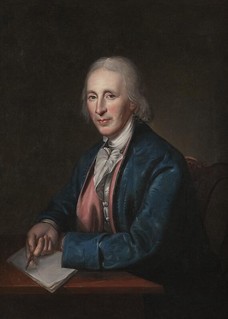 The David Rittenhouse Papers are now digitized in their entirety and available to view in the APS's Digital Library. The collection contains around 30 objects ranging from correspondence, to receipts for taxes paid, to Rittenhouse memorial material from the early 20th century.
The David Rittenhouse Papers are now digitized in their entirety and available to view in the APS's Digital Library. The collection contains around 30 objects ranging from correspondence, to receipts for taxes paid, to Rittenhouse memorial material from the early 20th century.
The David Rittenhouse papers cover from 1774 to 1932. The collection consists of 61 items and spans 0.25 linear feet. The items from the 20th century are memorial materials commemorating various members of the Rittenhouse, Abbot, and Sergeant families. A majority of the collection consists of correspondence, mainly between Rittenhouse and his family members, but also correspondence between Rittenhouse and various politicians and men of science. Also included are receipts, broadsides, and two genealogies: the Rittenhouse family's, and the family of Rittenhouse's son-in-law, Jonathan Dickinson Sergeant. The bulk of the collection was acquired in 1970, with one additional letter purchased in 2008.
The collection contains mainly correspondence but also interesting material like Rittenhouse's Astronomical Calculations and a Rittenhouse Family genealogy.
David Rittenhouse (1732-1796) was one of the most prominent 18th-century American scientists. A skilled instrument maker, Rittenhouse was an astronomer and, among many accomplishments, played a major role in recording the 1769 Transit of Venus. Rittenhouse also conducted important survey work for the state of Pennsylvania, establishing the state's western border and overseeing the completion of the Mason-Dixon survey.
In addition to his scientific endeavors, Rittenhouse's commitment to American independence places him among the founding fathers. Subordinating his scientific interests for the greater good of Pennsylvania during the American Revolution, Rittenhouse served as a member of both the Pennsylvania Assembly and the Pennsylvania Constitutional Convention. He held powerful positions on the Pennsylvania Council of Safety and the subsequent Committee on Safety. At President George Washington's behest, Rittenhouse also served as the United States Mint's first director. Rittenhouse was elected to the American Philosophical Society in 1768 and played a major role in putting the Society on the proverbial scientific map.
He held many positions in the Society, including serving as its President from 1791 until his death in 1796.
To read the complete article, see:
David Rittenhouse Papers
(https://www.amphilsoc.org/blog/david-rittenhouse-papers)
To access the Rittenhouse papers online, see:
Mss.SMs.Coll.11 - David Rittenhouse Papers
(https://diglib.amphilsoc.org/islandora/graphics/msssmscoll11-david-rittenhouse-papers)
NOTES FROM E-SYLUM READERS: APRIL 24, 2022
Stock Photo of Maundy Coins
Regarding the photo of Maundy coins published last week,
James O'Connell III writes:
"The coins in the photo appear to be stock, with the ones on the left appearing to be 1983 and the ones on the right appearing to be in 2010s, possibly 2014. Thank you for all the work you and your staff put into The E-Sylum. As an ANA Life member, I enjoy reading the articles each week."
Luckily, a couple images published this week do show the actual coins distributed at the ceremony - see the article elsewhere in this issue.
Our 'staff' is basically myself and our intrepid webmaster Bruce Perdue, who's always available to help and who sets up the issues for the web and presses the "Send" button every Sunday. Our essential unseen ingredient is John Nebel of Colorado who kindly provides server space and coding assistance. Thanks, everyone! -Editor
To read the earlier E-Sylum article, see:
PRINCE CHARLES PERFORMS MAUNDY CEREMONY
(https://www.coinbooks.org/v25/esylum_v25n16a24.html)
On That Continental Dollar Reverse Die
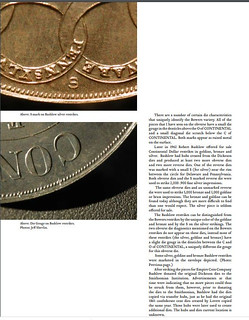 Julia Casey writes:
Julia Casey writes:
"Those Fred Weinberg collection dies are so cool! You probably already had some replies regarding the Continental dollar reverse. I noticed the "S" mark between Delaware and Pennsylvania and was able to track down information via the assistance of Google. It led me to this copy of the So-Called Dollar Collectors' Club Journal and an article by Jeff Shevlin, which indicates it was on the 1960s Bashlow silver restrikes."
Thanks - nice catch! -Editor
To read Jeff's article, see:
http://www.so-calleddollar.com/wp-content/themes/scdollar/assets/pdf/55551_SoCalledBookletLOW.pdf
Robert Bashlow and the Continental Dollar Die
"Regarding the Continental dollar reverse die, that is one of Bashlow's c. 1961 copy dies. It has an "S" down near 6 o'clock, and was used for his silver strikings.
"Back in the late 1970's I received a flyer offering a large collection of dies. There were several Thomas Elder dies in it, many of which I bought. I do not recall the seller, and if any of your readers has a copy of that flyer I would love to have a set of good photocopies of it. Perhaps this die is in it. I do know that the dies came from the Estate of August Frank, though by what route I do not know.
"Shortly after I received that flyer, who should come in to my place of employment but Robert Bashlow himself! I discussed the flyer with him, and he told me that August Frank had "stolen" (his word) his die collection from him, and that as soon as he got back from a trip to Spain he was going to try to get them back.
"Well, he did not return from Spain, and it was reported that he was killed in a hotel fire in Zaragoza. Over the years I have heard it suggested, without any evidence, that instead of dying he may have just staged a disappearance for financial reasons, but the bottom line is that he never came back to challenge the title to his former dies in amongst the Frank holdings.
"I have also heard from an extremely reliable source, a member of this forum, that Frank had legally obtained title to Bashlow's die collection in lieu of unpaid coinage charges. I am strongly inclined to believe this explanation."
Thanks! Great hobby lore. -Editor
To read the earlier E-Sylum article, see:
THE FRED WEINBERG COIN DIE COLLECTION
(https://www.coinbooks.org/v25/esylum_v25n16a16.html)
Louis Golino and David Wnuck - Twins?
Alan Weinberg writes:
"I was taken aback by the remarkable resemblance of Louis Golino and well known professional numismatist David Wnuck. They could be twins."
Well, I asked Dave for a photo, so here they are side-by-side. I think Alan's on to something here... -Editor
To read the earlier E-Sylum article, see:
AUDIO: SHANNA SCHMIDT, LOUIS GOLINO
(https://www.coinbooks.org/v25/esylum_v25n16a05.html)
Kurt Vonnegut's Beer Heritage
"Just wanted to say that I really enjoyed Jeremy Bostwick's article in the last issue regarding brewing medals and their artistic influences. Reading about the Indianapolis Brewing Company reminded me that before the 1887 merger, when it was owned by Peter Lieber, this was author Kurt Vonnegut's great-grandfather, and Kurt was always proud to make this fact known.
"May I suggest that Jeremy submit this writing to the Brewery Collectibles Club of America journal for publication? I happen to also be a member of that organization and am sure that many BCCA members would appreciate this foray into breweriana medals."
We passed the suggestion on to Jeremy, and he'll consider it! Great idea. Thanks. -Editor
For more information, see:
So It Goes: Kurt Vonnegut's Beer Heritage
(https://brookstonbeerbulletin.com/so-it-goes-kurt-vonneguts-beer-heritage/)
https://www.bcca.com/
To read the earlier E-Sylum article, see:
MEDALLIC ART AS ADVERTISING IN BREWING
(https://www.coinbooks.org/v25/esylum_v25n16a10.html)
OLD COLONY TRUST BUILDING COIN SCULPTURES
Patrick McMahon passed along this follow-on piece on the topic of coin sculptures on bank buildings - this time in Boston and with a Massachusetts flavor. Thanks! -Editor
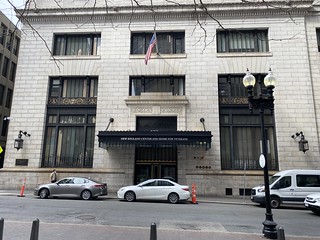 The images of the Philadelphia bank building in the past two issues of The E-Sylum reminded me of an old bank building here in Boston that I pass on my commute to work every day. It is the former Old Colony Trust building which is now the New England Center and Home for Veterans. It is located at 17 Court Street and it backs up to Government Center plaza across from City Hall. The address also happens to be the location where Ben Franklin apprenticed on the New England Courant and later where the Boston Gazette was published. The Massachusetts Chapter of the Sons of Revolution placed a plaque about it on the front of the building in 1913.
The images of the Philadelphia bank building in the past two issues of The E-Sylum reminded me of an old bank building here in Boston that I pass on my commute to work every day. It is the former Old Colony Trust building which is now the New England Center and Home for Veterans. It is located at 17 Court Street and it backs up to Government Center plaza across from City Hall. The address also happens to be the location where Ben Franklin apprenticed on the New England Courant and later where the Boston Gazette was published. The Massachusetts Chapter of the Sons of Revolution placed a plaque about it on the front of the building in 1913.
What makes it similar to the Philadelphia bank are some friezes on the back of the building (the Government Center side). They divide the first row of windows above ground level. There are six, and the middle four are modeled after Massachusetts-themed coins. The building was built in 1908 so these must date to the 1920s or later because one is the Pilgrim Tercentenary half-dollar. They are (from left to right):
- The 1788 Massachusetts cent reverse (without the word CENT on the shield)
- The 1788 Massachusetts cent obverse
- The Pilgrim Tercentenary half-dollar obverse
- The Pine Tree Shilling obverse
These aren't as nice as the Philadelphia ones but I still thought they'd be fun to share.
Absolutely! Thanks. Here are Patrick's photos. -Editor
To read the earlier E-Sylum articles, see:
NOTES FROM E-SYLUM READERS: APRIL 10, 2022 : Fugio Cent on Philadelphia Bank Building
(https://www.coinbooks.org/v25/esylum_v25n15a18.html)
PHILADELPHIA BANK BUILDING COIN SCULPTURES
(https://www.coinbooks.org/v25/esylum_v25n16a07.html)
THE CHASE ARCHITRAVE COIN SCULPTURES
And here's a report on coin sculptures on the Chase Bank Building in New York from Douglas Ward. Thanks! -Editor
I think the Holy Grail of Bank Building Coin Sculptures was The Chase Architrave. It was built around 1928 as the entrance of the Chase Bank Building which housed the newly founded Museum of Moneys of the World. Chase National Bank had purchased Farran Zerbe's Money of the World educational exhibit which became the core of the new museum's collection. Mr. Zerbe was its resident numismatist and curator until 1939. Most of the museum's contents were donated to the Smithsonian in 1977.
The Architrave contained twenty-three marble sculptures depicting coins of the world. The coins were selected by the American Numismatic Society and range from the earliest known of Greek origin to the most recent from the U. S. at that time – the Peace Dollar. The only detailed picture I've been able to find is on AllPosters.com. The building is still at 18 Pine St., but the Architrave is gone (as viewed on GoogleMaps). I would think the marble sculptures were preserved and was hoping that E-Sylum readers may know something or have pictures. I did find the original booklet detailing the Architrave conception and describing each coin represented. Below is the inside cover page and artist's representation of the Architrave.
The coins depicted are as follows: Consecratio, Metapontum, Poseidonia, Tarentum, The Shekel, Areus of Augustus, The Holland Rider, Milan (Galeazzo Mario Sforza), Pine Tree Shilling, Francis I, Spanish Milled Dollar, The Peace Dollar, The Joachimthaler, Elizabeth (the Pound), New York Cent, Japan, Russia (St. George), The Florin, Ptolemy, Janus Head, Alexander The Great, Corinth (illustrated on the cover), and The Syracusan Decadrachm.
The Corinth and the images from several pages of these are shown below.
The U. S. Government would not allow the use of a photographic reproduction of the Peace Dollar, which carried the date of 1927. Consequently, I inserted ‘imagined' images on the page as shown below.
A picture from the New York Public Library shows the entrance to be less imposing and impressive from a distance. (Taken from the corner of Pine and Nassau with the U.S. Sub-Treasury Building to the right. Ford Model T puts the time frame from the late 1920's to 1930's).
Picture at left courtesy of The New York Public Library. The New York Times article was published November 11, 1928. A photo on the site AllPosters.com is presumably copyright protected. Each sculpture looks to be 16 to 20 inches in diameter.
To see the AllPosters.com photo:
https://www.allposters.com/-sp/The-Main-Entrance-to-the-Chase-Manhattan-Bank-Posters_i5026693_.htm
To read the earlier E-Sylum articles, see:
NOTES FROM E-SYLUM READERS: APRIL 10, 2022 : Fugio Cent on Philadelphia Bank Building
(https://www.coinbooks.org/v25/esylum_v25n15a18.html)
PHILADELPHIA BANK BUILDING COIN SCULPTURES
(https://www.coinbooks.org/v25/esylum_v25n16a07.html)
THE MITCHELSON COLLECTION
Dave Hirt passed along these thoughts on an inventory of the Mitchelson collection. Thanks! -Editor
Sometimes I find an item in my library that makes me wonder where I got it from. Such is the case with this item. It is a 13 page list of the items in the Joseph C Mitchelson collection. It has an original cover letter from the Connecticut State Library, signed by the Assistant Director.
Mitchelson was born in Tarriftown, Conn. in 1856. (Although the American Numismatic Biographies book lists it as 1826) He died in Sept. 1911 of a heart attack while walking. His family owned a large tobacco farm. As an adult he went first to the midwest and then the far west to establish his family's tobacco business. He was very successful, and returned to Connecticut a very wealthy man.
He began his numismatic activities and built a remarkable collection, as this inventory will show. He willed his collection to the State Library of Ct., which had a special vault built for it.
This inventory lists 5744 pcs. This list does not have the detail that one would like. It lists boxes, then trays. For example, box 4 lists 1 tray, Colonial, Vermont. Then 4 trays Ct. cents. Box 5 lists 3 trays gold, $20 1922-1928 S&P mints 2 1/2 gold 1915-1928.
Some of these coins are dated after Mitchelson's death, so additional funds may have been provided for later purchases
Box 5 also has one tray, Sommers Islands & more Conn. cents. Box 9 has 5 trays Large Cents 1793-1806. Box 10 has 3 trays Half Cents 1793-1857. Very extensive list of private gold. Kellogg, Norris, Clark Gruber, Humbert inc. 3 $50. Morman, Baldwin, Assay Office,, Wass Molitor, Moffatt, Miners gold bar $13.32 I can not find this denomination listed. Is it unique?
At the end there is a list of coins on display. Wash. peace medal 1793. Colonial, NE shilling & sixpence. Oak Tree & Pine Tree coinage. Silver Dollars 1794 and 1795. Private gold Bechtler, Oregon Exchange, and Templeton. Reid.
What a collection! By the way, the cover letter is dated Jan. 1974.
Thanks - a great collection indeed. It's known for the Connecticut cents, but what a marvelous selection of other U.S., colonial and pioneer pieces. -Editor
Pete Smith writes:
"I checked three reliable sources and confirmed that Dave Hirt is correct and Mitchelson's year of birth was 1856. In the process I learned that his middle name was Cornish. I noted those changes in American Numismatic Biographies and thank Dave for reporting the error."
Here are some photos of the collection posted on the Collectors.com forum in 2019. -Editor
In the CT state library in Hartford CT, there is a state museum where you can view this phenomenal collection. There are two coffin looking displays placed in a dark corner of the main entryway of the museum. I work within walking distance of the state library so I decided to visit it at lunch on Friday.
When I got there, half of the halogen lights (4 of 8) were burnt out... leaving half of each display essentially dark. As you'll be able to see, I had a hard time taking pictures but I did so anyway. It's sad to see a collection of this caliber neglected, but I was still BLOWN out of the water by the quality of these coins!!!
To read the complete article, see:
NEW PICTURES ADDED 7/31/19!!-The Joseph C. Mitchelson Collection- A neglected World Class collection
(https://forums.collectors.com/discussion/982651/new-pictures-added-7-31-19-the-joseph-c-mitchelson-collection-a-neglected-world-class-collection)
For more information, see:
https://museumofcthistory.org/museum-exhibits/mitchelson-coin-collection/
To read the earlier E-Sylum articles, see:
THE JOSEPH C. MITCHELSON COLLECTION
(https://www.coinbooks.org/esylum_v17n40a12.html)
MORE ON THE JOSEPH C. MITCHELSON COLLECTION
(https://www.coinbooks.org/esylum_v17n41a18.html)
PAN CIVIL WAR MONEY & MEMORABILIA SHOWCASE
Here's the latest press release for next month's Civil War Money & Memorabilia Showcase at the PAN show near Pittsburgh. Hope to see some of you there! -Editor
The Civil War Money & Memorabilia Showcase is launched to honor the 160th
Anniversary of the Civil War including how money changed the war...and how
the Civil War changed our money, including lasting legacies we see today. The
Showcase will be hosted at the Pennsylvania Association of Numismatists (PAN)
Coin Show. The Showcase will include exhibits, talks, and show and tell
-type
presentations suitable for all ages. Topics and exhibits include minting, printing
and counterfeiting matters of the Civil War.
- Dates: May 19, 20, and 21, 2022
-
Hours:
- May 19: noon – 4pm;
- May 20: 10 am. to 6 pm;
- May 21 10 am – 4 pm
- Location:
209 Mall Blvd, Monroeville, PA
There is no charge. Valid identification required to enter.
Here's a sampling of some of the presentations, exhibits and programs in the works. Detailed schedules and times will be available at Websites for https://pancoins.org and https://no-small-change.org
Special Exhibits and Programs:
The Gold of the SS Central America
Robert (Bob
) D. Evans, Historian and Curator of the SS Central America's
gold recovery, will share images and stories about the process of recovering
millions of dollars of gold coins and bars from 800 ft. depth in the Atlantic
Ocean. When this tragedy happened in 1857, it caused a national banking
panic. With Author Rick Lank they will expand on how the sinking of the
SS Central America was part of the calamitous pre-war professional
background of U.S. General William Tecumseh Sherman...the Banker!
Featured Program:
Money Matters of the Civil War
Living Historian Dennis Boggs, portraying President Abraham Lincoln, will
chat
with Rebecca Rush and Rick Lank about what would have been in
HIS wallet in 1862 and 1863! Stories will include segments such as No
Small Change: Tsunami of Store Tokens
and Fresh Off the Press: the U.S.
Treasury Prints Greenbacks, our First U.S. Paper Money.
Featured Program:
The Furious Flight of the Confederate Treasure Train
Rick Lank, Author, tells tales about train loads of trunks and barrels of gold,
silver, copper and paper money secretly hustled out of Richmond VA after
the Confederacy fell to the Union in April 1865. Based on the book of the
same name, Lank follows one-or-more Trains rolling through the South to
their final ends, on-and-off the rails!
Talks in Ten (minutes):
Encased Postage
Wayne Homren, Editor of The E-Sylum Numismatic Newsletter, will share
information about the incredibly creative use of encased postage
during
the Civil War because there was, truly, No Small Change
.
Talks in Ten (minutes):
Loyal Women: Memorabilia and Collectibles Honoring
Women's Civil War History
Rebecca Rush discusses the Women's Relief Corp, (Auxiliary of the Grand
Army of the Republic) and memorabilia honoring other Loyal Women of
America
who provided Homefront relief work and raised millions of
dollars through Sanitary Fairs.
SPONSORSHIPS WILL BE APPRECIATED!
Sponsors are actively being sought for our Abraham Lincoln segments,
for FILMING the sessions and for each Exhibitor.
Sponsor's logos and appropriate recognition will be associated with the
overall Showcase and with sponsored exhibits, special programs and the
new Talks-in-Ten series.
Contact Rebecca Rush at cwshowcase@no-small-change.org or by telephone at 240-625-2583 for proposed sponsorship levels.
Presenters' brief bios, sponsor information and additional programs will be updated weekly at https://no-small-change.org.
To read the earlier E-Sylum article, see:
WOMEN'S RELIEF CORPS AT CIVIL WAR SHOWCASE
(https://www.coinbooks.org/v25/esylum_v25n15a17.html)
VOCABULARY TERM: INAUGURAL MEDAL
Here's another entry from Dick Johnson's Encyclopedia of Coin and Medal Terminology. I added images of the Roosevelt and Harding Inaugural medals. -Editor
Inaugural Medal. A medallic item issued on the occasion of a new administration, era or term. Inaugural medals are issued in the United States for inaugurations of presidents (infrequently for governors) and are an outgrowth of coronation medals issued for the coronation of newly crowned royalty. The issuing of such a medal is recognition of the installation of the new official; they imply a new beginning, and are an important part of the celebration. The United States event occurs on Inauguration Day (January 20th after a president election, it was March 4th prior to 1934).
A button was created as the public memento for the inauguration of George Washington in 1789. Early in the 19th century the United States Mint created Inaugural medals (but often long after Inauguration Day). It wasn't until 1889 –on the centennial of the George Washington Inauguration –that a medal on a ribbon was specifically created for the Inaugural Day festivities. The medal (actually a badge) bore portraits of President Benjamin Harrison and Vice President Levi Morton on the obverse and first President George Washington on the reverse.
That 1889 Inaugural badge was made by private medal industry, as is the case for most of these in the 20th century. The U.S. Mint made the official inaugural medals only in wartime or when a Mint official was on the medal committee (this occurred in 1929, 1941 and 1949). Private medal manufacturers could strike medals quicker and in more varieties needed than the U.S. Mint.
Prominent American sculptors have created the official Inaugural Medal designs; Augusts Saint-Gaudens (1905), Jo Davidson (1941, 1945), Paul Manship (1933, 1961) Gilroy Roberts (1973), Ralph Menconi (1969), Carl Paul Jennewein (1949), Walker Hancock (1953, 1957), Felix de Weldon (1965), Mico Kaufman and Frank Eliscu.
Some traditions for Inaugural Medals have developed in the 20th century, while unwritten, are becoming part of the Inaugural Medal heritage. For a president's first inauguration his portrait appears alone on the obverse, for a second term, both president and vice president appear on the obverse.
For each inauguration both president and vice president are given the medal in gold. The public can purchase replicas of the medal in either silver or bronze (the bronze slightly larger than the silver to prevent silverplating and sales by unscrupulous persons). Smaller sizes in gold, silver and bronze are offered for wider sale to all segments of the public. Goldplated silver (vermeil) and medals mounted in creative ways have also been offered to the public in recent years.
The President's Medal was the title of a book on the inaugural medal from Washington to Jimmy Carter in 1977; and a collectors; guide was published in 1981.
References:
O22 {1977} MacNeil.
O23 {1981} Levine,
X3 {1967} Luscomb, Washington Inaugural buttons, 214-218.
To read the complete entry on the Newman Numismatic Portal, see:
Inaugural Medal.
(https://nnp.wustl.edu/library/dictionarydetail/516133)
STEPHEN ALBUM INTERNET AUCTION 15 RESULTS
Here's the press release with results of the Stephen Album Rare Coins recent Internet Auction 15. -Editor
Stephen Album Rare Coins held its Internet Auction 15 on April 11, 2022 at its offices in Santa Rosa, California. This auction surpassed all expectations, with total prices realized of $112,500 (including buyer's fees) on a middle estimate of $51,000. The auction comprised 600 lots of A-Z world, Chinese, and Indian coins and had a sell-through of 95.5%.
The success of the auction was helped greatly by many high-quality coins from the Joe Sedillot Collection. Many items went for multiples of their estimates.
Some highlights follow (prices exclude buyer's fees):
LOT 67: CUBA: Republic, AR 20 centavos, 1948, KM-13.2, a fantastic quality example! PCGS graded MS66, ex Joe Sedillot Collection. Estimated at $50 to $75. Realized $2,400.
LOT 180: GREENLAND: Christian X, 1912-1947, 25 øre, 1926, KM-6, with central hole, a superb quality example! PCGS graded MS65, ex Joe Sedillot Collection. Estimated at $50 to $75. Realized $2,200.
LOT 489: SINKIANG: Republic, AE 10 cash, Kashgar, CD1928, Y-B38.1, CL-XJ.43, with tóng bì inside starburst, PCGS graded MS61 BN, ex Shawn Hamilton Collection. Estimated at $100 to $150. Realized $2,200.
LOT 524: TIBET: AR 3 srang, BE16-7 (1933), Y-25, L&M-659, Autonomous Tibetan issue, snow lion facing left in center with Himalayan range behind with two suns above and ornament below, an attractive mint state example, PCGS graded MS62. Estimated at $100 to $150. Realized $1,700.
LOT 254: LATVIA: First Republic, AR 5 lati, 1932, KM-9, key date, PCGS graded MS64. Estimated at $80 to $120. Realized $1,300.
LOT 373: STRAITS SETTLEMENTS: Edward VII, 1901-1910, AR 10 cents, 1902, KM-21, an attractive mint state example, PCGS graded MS62, ex Joe Sedillot Collection. Estimated at $75 to $100. Realized $800.
LOT 110: EL SALVADOR: Republic, AE 1/4 real, 1909, KM-120, a lovely mint state example! PCGS graded MS63 BN, ex Joe Sedillot Collection. Estimated at $75 to $100. Realized $700.
LOT 554: SIKH EMPIRE: AR rupee, Amritsar, VS[18]85, KM-21.1, with frozen date VS1884, a wonderful mint state example! PCGS graded MS64. Estimated at $100 to $150. Realized $700.
LOT 42: CAMBODIA: Norodom I, 1860-1904, AR 50 centimes, 1860, KM-45, Lec-50, local official restrike struck at the Phnom Penh mint from 1887-1901 from rusted dies, portrait européanisé type, a superb quality example! PCGS graded MS65. Estimated at $100 to $150. Realized $650.
LOT 559: BRITISH INDIA: East India Company, AE 1/2 anna, 1835(m), KM-447.1, S&W-1.83, Prid-133, a lovely chocolate brown mint state example! PCGS graded MS63 BN. Estimated at $100 to $150. Realized $600.
Company CFO Paul Montz commented Lesser valued material is doing quite well in today's market, and this
auction certainly proves that out. Frankly, some of the results have been really staggering.
The firm is currently taking consignments for future internet and premier auctions.
Please visit www.stevealbum.com for more information.
To read the earlier E-Sylum article, see:
STEPHEN ALBUM INTERNET AUCTION 15
(https://www.coinbooks.org/v25/esylum_v25n15a23.html)
ATLAS NUMISMATICS APRIL 24, 2022 UPDATE
Atlas Numismatics has updated their website with 389 new coins, medals, and tokens at fixed prices. Selections include the following items. -Editor
1067642 | DANISH WEST INDIES. Christian IX. 1904-P GJ AV 10 Daler, 50 Francs. PCGS MS64PL (Prooflike). Copenhagen. Head left / Seated liberty figure divides denominations, date below. KM 73; Friedberg 1.
Superb prooflike surfaces; very rare in this quality.
$36,500
To read the complete item description, see:
1067642 | DANISH WEST INDIES. Christian IX. 1904-P GJ AV 10 Daler, 50 Francs.
(https://atlasnumismatics.com/1067642/)
1066680 | GREAT BRITAIN. George IV. (King, 1820-1830). 1823 AV Two Pounds. PCGS PR65DCAM (Deep Cameo). By Jean Baptiste Merlen. Edge: Raised lettering, ANNO REGNI IV. DECUS ET TUTAMEN. GEORGIUS IIII D:G: BRITANNIAR: REX F:D:. Head left / St. George slaying the dragon. KM 690; SCBC-3798; Fr.-375; W&R-218 (R3).
Extremely rare in proof; deep mirrors and heavily frosted devices. As of February 2022 the finest certified example at both PCGS and NGC and the sole deep cameo example in any grade at both services.
$69,500
To read the complete item description, see:
1066680 | GREAT BRITAIN. George IV. (King, 1820-1830). 1823 AV Two Pounds.
(https://atlasnumismatics.com/1066680/)
1067097 | GREAT BRITAIN. Victoria. (Queen, 1837-1901). 1849 AR "Godless" Florin, Two Shillings. PCGS MS64. Edge: Milled. VICTORIA REGINA. Crowned bust left, with W.W. behind bust within linear circle / Crowned shields of England, Scotland and Ireland in cross formation with flowers at corners. KM 745; SCBC-3890; ESC-2815 (Prev. ESC-802).
$3,450
To read the complete item description, see:
1067097 | GREAT BRITAIN. Victoria. (Queen, 1837-1901). 1849 AR "Godless" Florin, Two Shillings.
(https://atlasnumismatics.com/1067097/)
1067241 | JAPAN. Edo. (1725-1837) AV Oban. PCGS MS62. 151x93mm. 165.44gm. Four counterstamps with Kiri; value and mintmaster's signature in black ink / Two counterstamps with Kiri; one with signature and three official mintmarks. C 24.1. Original inking; JNDA 09-8.
$67,500
To read the complete item description, see:
1067241 | JAPAN. Edo. (1725-1837) AV Oban.
(https://atlasnumismatics.com/1067241/)
1067201 | MEXICO. Philip V. 1741-Mo MF AR 8 Reales. NGC MS64. Mexico City. PHILIP · V · D · G · HISPAN · ET IND · REX. Crowned shield flanked by M F 8 / ...VNUM. Crowned globes flanked by crowned pillars with banner, date below. KM 103.
Sharply struck and highly lustrous.
$19,500
To read the complete item description, see:
1067201 | MEXICO. Philip V. 1741-Mo MF AR 8 Reales.
(https://atlasnumismatics.com/1067201/)
Updates to their online inventory are issued monthly. For more information and to sign up for the firm's monthly newsletter, visit: atlasnumismatics.com
WORLD BANKNOTE AUCTIONS SALE 25
Here's the press release for World Banknote Auctions upcoming Live Sale 25. Some rare and beautiful notes here. -Editor
Recently World Banknote Auctions listed Live Sale 25 on its website, which closes in two different segments. The first segment, the traditional live sale, closes on May 5th, 2022, with live bidding that day at 1 PM Eastern / 10 AM Pacific. The following day, on May 6th at 1 PM Eastern / 10 AM Pacific an additional segment closes in a timed auction (no live bidding, although lots may be extended if a bid is received 10 minutes before closing). Live Sale 25 offers a total of 1043 lots from around the world, with highlights including a wide variety of items, from classic British Commonwealth to modern notes that are the finest in the PMG population report. Some highlights are selected below but the entire catalog can be viewed on the company's website, www.worldbanknoteauctions.com.
Lot 25033 comes from Belgium, and is an extremely scarce type 100 Francs (Pick-64e) dated 1904 graded Very Fine 30 by PMG, a denomination and type that is seldom offered for sale in any grade. This one has some pinholes, but it is fully original otherwise, and certainly can lay claim to being one of the nicest pieces in existence well over a century after it was first issued. This European rarity carries a pre-auction estimate of $4,000-$5,000.
Lot 25107 is a 1 Yuan dated 1904 (Pick-S2090) from the Hupeh Government Bank in China, graded Very Fine 30 by PMG. A very scarce and popular type, the front features a fantastic engraving of Chinese dragons. The first offered in quite some time, it carries a pre-auction estimate of $6,000-$8,000.
Lot 25113 is a 1000 Francs from the Congo Democratic Republic (Pick-2a) dated 1962 and graded Gem Uncirculated 66 EPQ by PMG. A type that features the same basic design introduced during colonial times when the country was known as Belgium Congo, this was issued after the country gained its independence in the early 1960s. A very difficult type at this grade level, it carries a modest estimate of $800-$1,000.
Lot 25132 is part of a small but advanced collection from Danzig, a free-city state that today is in Poland but issued its own currency prior to World War II. This lot is a scarce, fully issued 50 Gulden dated 1937 (Pick-65) graded Gem Uncirculated 65 EPQ by PMG. Very scarce at this grade level in issued form, it is surely missing from many advanced collections, and carries a pre-auction estimate of $2,000-$2,500.
Lot 25143 is one of the true rarities in this auction and a very special note indeed. It is a 100 Shillings or 5 Pounds from East Africa dated 1951 (Pick-31b) graded Gem Uncirculated 66 EPQ by PMG. The single finest example in the PMG population report, this is the first public offering in uncirculated grade in many years. It is an iconic African Colonial and Commonwealth type that is surely missing from many advanced collections and was issued at a time that this note represented a large sum of money. It is also a large-format banknote, making the survival of this note in this grade nothing but a miracle. This rarity destined for an advanced collection carries a pre-auction estimate of $8,000-$10,000.
Lot 25189 comes from France, and is a classic 20 Francs note from the 19th century (Pick-55). Dated 1871 and graded Extremely Fine 40 by PMG (with a comment for pinholes) this is one of the brightest and nicest examples of this type to have been seen by us. While it does have the pinholes typical for French notes of this period, it is fully original otherwise, and is a great representative for this scarce type. It carries a pre-auction estimate of $2,500-$3,000.
Lot 25311 is an iconic Queen Elizabeth type from Jamaica dated 1960. This 5 Pound (Pick-52a) is graded Choice About Uncirculated 58 by PMG. Not previously offered by us, this is a scarce denomination that appears less frequently than the large-size type issued just prior to this one. At first glance it has the appearance of an uncirculated note, but some hardly-discernible evidence from circulation limits the grade. Regardless, it is still a rare banknote and it carries a pre-auction estimate of $2,500-$3,000.
Lot 25521 is an iconic French Colonial and Thai Rarity that is seldom offered for sale in any form. A proof for a 5 Ticals from the Banque de L'Indochine (Pick-S101p), what makes this particular note (which dates back to the final years of the 19th century) so special is that it is a mule
or pattern
piece printed with the back meant for the banknotes (of the same type) of French Indo-China. Printed in Paris either on purpose or by accident, the auction description details the full history of this piece, which is a fascinating read. It carries a pre-auction estimate of $6,000-$8,000.
To read the earlier E-Sylum article, see:
SIAM 5 TICALS WITH FRENCH INDO-CHINA BACK
(https://www.coinbooks.org/v25/esylum_v25n16a29.html)
ARCHIVES INTERNATIONAL AUCTION 76
Here is the announcement for the May 4, 2022 sale by Archives International Auctions. -Editor
ARCHIVES INTERNATIONAL AUCTIONS OFFERS HISTORIC U.S., CHINESE & WORLD BANKNOTE COLLECTION ON MAY 4, 2022
The auction will be held by Archives International Auctions at their offices in River Edge, N.J.
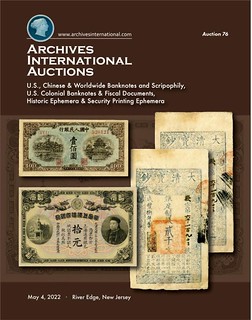 The May 4, 2022, Auction 76, by Archives International Auctions will consist of 672 lots of rare and desirable U.S., Chinese & World Banknotes, Scripophily, Historic Financial Ephemera, and Security Printing Ephemera. The auction is highlighted by 139 lots of Chinese banknotes, a majority of the notes being from an old-time collection that have not been offered previously at auction. Also included are over 300 Worldwide banknotes with many rarities present; 51 lots of U.S. Colonial banknotes and fiscal documents, U.S. Obsolete banknotes, depression scrip, Confederate fiscal documents and related items; 42 lots of Historic Ephemera and Security Printing Ephemera with additional lots of checks drafts and exchanges; 10 lots of world stamps and postal history; and, ending with 108 lots of U.S. and World Scripophily.
The May 4, 2022, Auction 76, by Archives International Auctions will consist of 672 lots of rare and desirable U.S., Chinese & World Banknotes, Scripophily, Historic Financial Ephemera, and Security Printing Ephemera. The auction is highlighted by 139 lots of Chinese banknotes, a majority of the notes being from an old-time collection that have not been offered previously at auction. Also included are over 300 Worldwide banknotes with many rarities present; 51 lots of U.S. Colonial banknotes and fiscal documents, U.S. Obsolete banknotes, depression scrip, Confederate fiscal documents and related items; 42 lots of Historic Ephemera and Security Printing Ephemera with additional lots of checks drafts and exchanges; 10 lots of world stamps and postal history; and, ending with 108 lots of U.S. and World Scripophily.
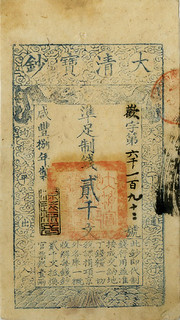
We are excited to offer another outstanding assortment of U.S. and World banknotes and scripophily
, stated Dr. Robert Schwartz, President of Archives International Auctions. Included in the upcoming auction are rare and desirable numismatic items that will enhance the collections of every level of collector and dealer
.
The auction begins with 460 lots of world highlighted by 2 sequential high grade examples of Ch'ing Dynasty, 1858, 2000 Cash notes that are both graded Choice Uncirculated 63; an 1949 Peoples Republic of China, 100 Yuan, P-832b rare variety; the Bank of Taiwan, 1946, 100 Yuan, P-1940 graded Superb Gem Uncirculated 67 EPQ and the highest graded for this note; 3 different specimen and proof, International Banking Corporation rarities dating from 1905 to 1918; an outstanding 1908 Sin Chun Bank of China, Private Banknote rarity graded PMG Choice Uncirculated 64 EPQ; and dozens of other Chinese banknote rarities.
Additional world banknote highlights include an 1847, Montreal, First of Exchange signed by General C.M. Cathcart, Governor General of the Province of Canada; a Democratic Republic of the Congo, 1963, 5000 Francs Specimen; Greece is highlighted by 12 exciting and desirable lots including 7 rare Bank of Greece notes including the highest graded Bank of Greece, 1941, 50 Drachmai, P-168, Graded superb Gem Unc. 67 EPQ; the highest graded New Caledonia, Banque de L'Indochine, 1963, 1000 Francs example graded Choice Uncirculated 64 is offered; and numerous rare and desirable banknotes throughout that are too numerous to mention.
U.S. Colonial Banknotes and Fiscal Paper lots follow World Banknotes and are highlighted by a 1793, John Warder & Co., First of Exchange, that was Issued in New York and sent to London. Warder & Co, went bankrupt in 1793 or 1794 and the company was instrumental in causing the bankruptcy of Robert Morris, signer of the Declaration of Independence and one of our Founding Fathers; a ca. 1790's, Washington City, Canal Lottery Ticket in VF condition is offered; and a wide variety of U.S. Obsolete banknotes are included in the auction.
U.S. & World Historic Ephemera and Autographs include a signed photograph of William Randolph Hearst from his 80th Birthday party as well as additional photographs of him and his family; A Thomas Watson, who founded IBM, 1940 Autographed Letter about the 1939 New York World's Fair; an 1868, Francis E. Spinner hand written letter about a widowed mother of a Civil War Soldier; a J.P. Morgan signed document from 1888; a 1617 English Tally Parchment Receipt; and other historic and interesting ephemera. Security Printing Ephemera includes 4 different ca.1910-20 colorful and attractive advertising notes from Waterlow & Sons, Ltd., Bradbury, Wilkinson & Co., and E. Desfosses, from France.
Additional items include an advertising coupon sheet from the National Bank Note Co.; a sheet of 50 American Bank Note Company, 1862, Essay Revenue Proof Stamps printed on bond paper; and numerous additional items rarely seen at auction. Also included are 10 lots of U.S. Revenue and State Revenue stamps; Revenue imprinted checks and additional esoteric and rare items. The auction ends with 108 lots of U.S. & World Bonds and Shares including the topics of banking, railroads, mining, and additional subjects.
Previews will be limited and by appointment only and we will be observing strict safety precautions including the wearing of masks and observing social distancing to protect our team as well as our guests. We will do our best to accommodate anyone who desires additional information and photographs. For questions, please call 201-944-4800 or email info@archivesinternational.com.
The online catalog for the Wednesday, May 4th , 2022 auction is on Archives International Auctions' website and can be viewed via the Archives International live bidding platform. It can also be viewed as a Virtual Catalog or downloadable Sale 76.pdf on their website. To pre-register for Live Internet Bidding, log on to the Archives International Auctions website, at www.ArchivesInternational.com.
Archives International is now working on their Summer and Fall 2022 auctions and are seeking quality consignments for future auctions or outright purchase including U.S. and worldwide banknotes, coins, stocks, bonds, stamps, postal history, historic ephemera, and autographs. To sell or consign one piece or an entire collection, please call AIA at (201) 944-4800; or email them at info@archivesinternational.com
You may also write to Archives International Auctions, at 1060 Main Street, River Edge, NJ 07661, U.S.A. To learn more about Archives International Auctions and the auction planned for May 4th , 2022 auction, log on to www.ArchivesInternational.com.
NUMISMATIC NUGGETS: APRIL 24, 2022
Here's a selection of interesting or unusual items I came across in the marketplace this week. Tell us what you think of some of these. -Editor
This is one of a handful of very interesting commemorative issues struck by Constantine the Great. The type offered here is the other of the more affordable types and was made to reaffirm Rome as the centre of the empire in A.D. 330. They are made from bronze and show the Goddess of the city, ‘Roma', in a helmet and war gear on the obverse. The reverse shows the She-Wolf suckling the babies Romulus and Remus. This is to symbolise the origin story of the founding of Rome. But what makes these coins so interesting is how well they have survived! At this time bronze coins would circulate so heavily that it is very hard to find them in a good grade. We have a small collection of this commemorative from 1400 years ago in this exceptional About Extremely Fine grade.
From the website of Coincraft in London. Nice coin. -Editor
To read the complete item description, see:
Rome Commemorative AEF
(https://coincraft.com/rome-commemorative-aef?utm_source=Subscribers+to+Coincraft.com)
USA, nickel alloy pattern $5, 1851, San Francisco Standard Mint, plain edge, very rare, NGC XF 40. Kagin-1.
Obverse: coronet Liberty head facing left, WJT on truncation, thirteen stars encircling, date 1851 below; Reverse: olive wreath around, 5 / DOLLARS / SAN FRANCISCO / STANDARD MINT / 22 CARRAT / FINE inside; medal alignment.
Very rare California pattern piece noted by Kagin as Rarity 7 with around six or so examples known. Minor wear noted on the high points and a bit crudely struck using rusted dies (as are most examples) as seen on Liberty's neck and the field around the bust, some definition retained in the locks of hair plus a full LIBERTY visible, pale golden toning with some grayish hues in the fields. NGC #6287944-001.
An interesting minting history item from the May 4-6 Sedwick Auction 31. -Editor
To read the complete lot description, see:
USA, nickel alloy pattern $5, 1851, San Francisco Standard Mint, plain edge, very rare, NGC XF 40.
(https://auction.sedwickcoins.com/USA-nickel-alloy-pattern-5-1851-San-Francisco-Standard-Mint-plain-edge-very-rare-NGC-XF-40_i44824147)
CHINA. Mint Trial Bronze Medal, 1922. PCGS Genuine--Graffiti, AU Details.
Diameter: 39 mm. Struck by the Waterbury Farrel Foundry & Mach. Co. U.S.A with machinery intended for use at the Shanghai Mint.
Another interesting minting history item I'd never seen before. From the Stack's Bowers May 2022 Hong Kong Auction. -Editor
To read the complete lot description, see:
CHINA. Mint Trial Bronze Medal, 1922. PCGS Genuine--Graffiti, AU Details.
(https://auctions.stacksbowers.com/lots/view/3-W6PIT/china-mint-trial-bronze-medal-1922-pcgs-genuine-graffiti-au-details)
CHINA. Taiwan. Guishan Mint Medal, Year 65 (1976). PCGS MS-67.
I didn't plan it this way, but we're developing a theme this week. This minting-related piece is a medal picturing coins. This piece is also in the Stack's Bowers May 2022 Hong Kong Auction. -Editor
To read the complete lot description, see:
(t) CHINA. Taiwan. Guishan Mint Medal, Year 65 (1976). PCGS MS-67.
(https://auctions.stacksbowers.com/lots/view/3-W687T/t-china-taiwan-guishan-mint-medal-year-65-1976-pcgs-ms-67)
COIN, TUNISIA, MUHAMMAD AL-HADI BEY
20 Francs - 1903 - Paris - AU(55-58) - Gold
Found on the NumisCorner site. Bice gold piece from the Paris Mint. -Editor
To read the complete lot description, see:
COIN, TUNISIA, MUHAMMAD AL-HADI BEY
(https://www.numiscorner.com/products/coin-tunisia-muhammad-al-hadi-bey-20-francs-1903-paris-au55-58-gold-1)
COINS OF THE FAMILY OF CONSTANTINE THE GREAT
In his latest CoinWeek Ancient Coin Series article, Mike Markowitz examines coins of the family of Constantine the Great. Here's an excerpt - see the complete article online. -Editor
Constantinus I (The Great
) is a pivotal figure in Western history because of his role in the Christianization of the Roman Empire. Like so many historic rulers, however, his family relations were… troubled. Coins issued in the names of Constantine's relatives offer a vivid picture of the turbulent middle decades of the fourth century. These coins include some of the most common and affordable surviving ancients, as well as many spectacular rarities.
Crispus
Appointed to command the army on the Rhine frontier, Crispus established his headquarters at Treveri (Trier, Germany) married, and had a son. He fought several victorious campaigns against Germanic tribes. In 324, Constantine gave Crispus command of his fleet in the civil war against Licinius. On coins dated to 316 and issued at Trier, Arles, and Ticinum, Crispus is hailed as Noble Caesar
and Prince of the Youths
(Princeps Iuventutis).
As Caesar, Crispus issued extensive coinage in his own name – including a lovely gold solidus dated to 325-26 that depicts the young prince with an uplifted gaze often described as eyes to God.
His name and title appear on the reverse, with the figure of winged Victory, not yet transformed into a Christian angel.
In 326, Crispus was arrested and executed under mysterious circumstances.
Fausta
Fausta, second wife of Constantine Half siliqua, Treveri late 307, AR 1.06 g. FAVSTAE NOBILISSIMAE FEMINAE Draped bust l. with hair held up in a knot on top of head. Rev. IVNO REGINAE Juno standing l., holding long sceptre and patera, at her feet, peacock. C 22. RIC 756. Of the highest rarity, only the fourth specimen known and the only one in private hands. Numismatica Ars Classica > Auction 84 20 May 2015, Lot: 1210. Realized: 38,000 CHF (approx. 40,494 USD).
Born in 289, Flavia Maxima Fausta was the daughter of Emperor Maximian and the sister of Emperor Maxentius. At the age of about 17, she was given in marriage to cement a political alliance between Constantine and her father. To make this marriage possible, Constantine set aside his partner
Minervina. Fausta bore three sons who became Roman emperors, along with three daughters – two of whom married future emperors.
To read the complete article, see:
CoinWeek Ancient Coin Series: The Family of Constantine the Great
(https://coinweek.com/ancient-coins/coinweek-ancient-coin-series-the-family-of-constantine-the-great/)
THE 2022 MAUNDY COINAGE PACKAGE
At last, an article picturing the 2022 Maundy coinage from the Royal Mint. Well, the images of the coins themselves are tiny, but here we do see the entire package, including a printed program for the ceremony. Great numismatic ephemera - does anyone have a collection of these? -Editor
Prince Charles has presented four Norfolk people with pouches full of specially-minted coins in recognition of their Christian community service.
Lyn Fairchild, 75 and from Cawston, Betty Hastings from Cromer, Eric Swann from Dereham and Alan Riches from Bradwell were among 96 men and 96 women from across the country who were invited to Windsor Castle to receive the Maundy Money.
As 96 is the Queen's age, each recipient was given two sets of coins - in one set the coins amounted to 96 pence.
Mrs Fairchild - who made more than 1,500 facemasks for people during the pandemic - including one which was given to the Pope - said the service at Windsor's St George's Chapel was memorable.
"It was absolutely magical, and wonderful that it was taken by Prince Charles," she said. "He put the purses in my hand and 'this is on behalf of the Queen'.
Mrs Fairchild said one set of coins included 1p, 2p, 3p and 4p coins up to the value of 96p, and the other set had a specially-minted £5 coin and another 50p coin.
"There was a procession beforehand with the military in their bright red uniforms, and afterwards we walked to Windsor Castle itself and there was a wonderful reception," she added.
To read the complete article, see:
Maundy Money honour for four Norfolk Christians
(https://www.northnorfolknews.co.uk/news/maundy-money-prince-charles-norfolk-8911188)
To read the earlier E-Sylum article, see:
PRINCE CHARLES PERFORMS MAUNDY CEREMONY
(https://www.coinbooks.org/v25/esylum_v25n16a24.html)
Here's another article with a glimpse of the coins. -Editor
To read the complete article, see:
Maundy money honour for Saddleworth stalwart Geoffrey
(https://www.theoldhamtimes.co.uk/news/20081663.maundy-money-honour-saddleworth-stalwart-geoffrey/)
THE ANNAPOLIS TUESDAY CLUB MEDAL
In a Stack's Bowers blog article, Dave Bowers discusses one of my favorite rare-as-hell medals, the 1746 Annapolis Tuesday Club medal. -Editor
Recognized as a great rarity today is the membership medal of the Tuesday Club, a piece that revives the memory of life in the beautiful port city of Annapolis at the middle of the 18th century. On the Severn River near its entrance to the Chesapeake, the small village first settled in 1649 became the colonial capital in 1694. By the time the Tuesday Club formed in 1746, the city had become an economic hub of Maryland with a population surpassing 25,000. An 1886 essay by F.B. Mayer in Frank Leslie's Popular Monthly recalls the era:
The group held biweekly meetings called sederunts in each other's homes, applying a set of exacting but lighthearted laws. One law made it mandatory to toast the health of the members' wives and ladies, "immediately after supper and before any other toasts or healths go round." Another, called the "Gelastic Law," stated:
That if any subject of what nature soever be discussed, which levels at party matters, or the administration of the government of this province, or be disagreeable to the Club, no answer shall be given thereto, but after such discourse is ended, the Society shall laugh at the member offending, in order to divert the discourse.
In May of 1748, the members authorized the striking of a gilded silver keepsake that holds the record as America's earliest club medal. Dr. Alexander Hamilton of Scotland, a founding member who later would write a 1,900-page History of the Tuesday Club, created the design and the dies were cut in London, possibly by John Kirk (according to C. Wyllys Betts), at a cost of 6 1/2 guineas.
The Tuesday club medal's legends indicate what was most important to the group. CONCORDIA RES PARVAE CRESCUNT, which roughly translates to "happily joining like-thinking fellows" and "LIBERTAS ET NATALE SOLUM" means "liberty and homeland only." CAROLUS COLE of the obverse legend was Charles Cole, the club's first president.
The Tuesday Club disbanded in 1756.
To read the complete article, see:
1746 Annapolis Tuesday Club Medal
(https://www.stacksbowers.com/News/Pages/Blogs.aspx?ArticleID=1746-annapolis-tuesday-club-medal)
INDIAN PEACE MEDALS AT THE ANS
An ANS Pocket change blog article by Oliver Hoover examines the Indian Peace Medals at the ANS. Here's an excerpt - see the complete article online. -Editor
The Dead Zone was a popular science fiction thriller written by Stephen King in 1979 that was made into a movie starring Christopher Walken in 1983. It tells the story of a man who discovers that he has the ability to see visions of the future when he touches objects that belong to another person. The Indian Peace Medal collection of the American Numismatic Society is kind of like that. When you work with these medals, look at them on a frequent basis, and have the opportunity to hold them in your hand, they never fail to call up visions of their original owners and of the specific pasts that they experienced.
Don't get me wrong. Coins are great. The ANS is filled to the brim with coins that have fascinating stories to tell. However, except for specimens obtained straight from the mint, most coins circulated through many hands in commerce before coming to rest in the Society's collection, and most of those hands belong to nameless and faceless individuals. The Indian Peace Medals are very different in this regard. They were given to specific people, many of whose names can still be found in various forms on U.S. and Canadian treaty documents of the nineteenth century. As such, the medals serve as relics for communing with their original Native American recipients and in a few cases the specific fur traders (John Lawe and Pierre Chouteau) who may have distributed them. The Indian Peace Medals in the collection are also especially powerful because, with the exception of a King George III medal very doubtfully associated with Tecumseh (Fig. 1), the vast majority that are attributed to their original owners by name are not linked to famous great men.
None of the medals are said to have belonged to the larger-than-life figures of Black Hawk (Mahkate:wi-meši-ke:hke:hkwa), Sitting Bull (T?at?á?ka Íyotake) or Crazy Horse (T?ašú?ke Witkó). Instead, they belonged primarily to somewhat lesser flesh-and-blood leading men trying to negotiate futures for themselves and their people in a North America that was changing forever.
Honko) with embedded bullet.
Perhaps the most famous Indian Peace Medal in the ANS collection with a recipient's name attached to it is the large Abraham Lincoln medal that saved its owner from a gunshot (Fig. 2). It is said to have belonged to a nineteenth-century Ute (Núuchi) leader named Honkapkna (often reduced to Honko or Unco in contemporary sources) associated with the White River Ute Indian Agency in Colorado.
To read the complete article, see:
Indian Peace Medals at the American Numismatic Society
(https://numismatics.org/pocketchange/peace-medals/)
THE JOHN FRITZ MEDAL
While searching for other things I came across this medal in the collection of the American Numismatic Society. I've been aware of the John Fritz medal for a while, but still haven't seen one in person. Great medal! -Editor
The medal was designed by Victor David Brenner. Here is some additional information found online. -Editor
The John Fritz Medal has been awarded annually since 1902 by the American Association of Engineering Societies for "outstanding scientific or industrial achievements". The medal was created for the 80th birthday of John Fritz, who lived between 1822 and 1913.
The John Fritz Medal is often described as the "Nobel Prize for engineering." This prestigious award is given annually for notable scientific or industrial achievements. It is granted to living people, but also posthumous. Since its initiation in 1902, there were four years when it was not awarded.
The John Fritz Medal board once consisted of sixteen representatives is four national societies in the fields of civil engineering, mining, metallurgical engineering, mechanical engineering and electrical engineering.
Among the most notable winners are Thomas Edison, Lord Kelvin, Alexander Graham Bell, George Westinghouse, Orville Wright, Charles F. "Boss" Kettering, Claude Shannon, Robert Noyce and Gordon Moore.
The first five are household names today. Kettering was a prolific inventor and head of research at General Motors from 1920 to 1947. The last three may be less well known, but their work was foundational to the creation of modern computing and telecommunication. Mathematician Shannon is one of my personal favorites - a fellow University of Michigan and Bell Laboratories alumnus, his fundamental work on information theory underlies the internet, cryptography, and many machine learning algorithms. The 2021 winner? Elon Musk. -Editor
To read the complete article, see:
John Fritz Medal
(https://en.wikipedia.org/wiki/John_Fritz_Medal)
To read the complete ANS object listing, see:
https://numismatics.org/hahlo-15-43-44-50/
For more information, see:
John Fritz Medal Award
(https://www.smenet.org/Professional-Development/Awards-Competitions/Award-Recipients/John-Fritz-Medal-Award)
THE GREAT AMERICANS MEDAL
The late Supreme Court Justice Ruth Bader Ginsburg has been awarded the Great Americans medal. Here's an excerpt from a Smithsonian magazine article. -Editor
She was an associate justice of the U.S. Supreme Court who, at least for the last decade of her life, did not need an introduction. The diminutive—5' 1—Ruth Bader Ginsburg was regaled with standing ovations wherever she went, often to her bewilderment. But she was much more than just the Notorious RBG.
The fullness of her achievements is being recognized by the Smithsonian's National Museum of American History, which has posthumously given her its Great Americans Award.
Museum Director Anthea Hartig awarded the signature 1.85-ounce gold coin to Ginsburg's daughter Jane C. Ginsburg and son James S. Ginsburg in a virtual ceremony on March 30. The award, modeled after the 1907 Double Eagle coin designed by sculptor Augustus Saint-Gaudens, has been presented each year since 2016. Recipients have included Madeleine K. Albright, Colin Powell, Tom Brokaw, Cal Ripken Jr., Billie Jean King, Paul Simon and Anthony S. Fauci.
During a recent ceremony, her daughter Jane, a professor at Columbia University Law School, and her son James, founder of a classical music record label in Chicago, reminisced about their mother. They also gave contextual back stories for a trove of objects from Ginsburg's chambers, including a stack of printed briefs from her own arguments before the court and a nameplate for her library cart, that the family has donated to the museum.
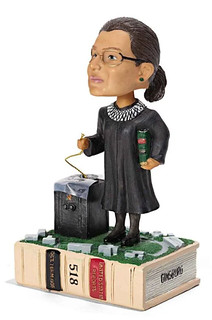 The 20-some objects will be used to
The 20-some objects will be used to tell more fully the complex history of the United States and Justice Ginsburg's connections to pivotal moments in women's history, especially the fight for gender equity,
says Hartig. They may eventually be displayed, but otherwise, once catalogued, will be available for viewing online.
Chief Justice John G. Roberts says he had been honored to serve with Ginsburg for 15 of her 27 years at the Supreme Court. Prior to that, it was my more stressful honor to argue before her as an advocate in the Court,
he says. He remarked upon her long legal career, which began with Ginsburg being one of nine women in a class of more than 500 at Harvard Law School. She was a law professor at Rutgers in the 1960s and a founding attorney with the Women's Rights Project at the American Civil Liberty Union in the 1970s, arguing as lead counsel before the Supreme Court in six cases, winning five.
The Smithsonian received one of her most-widely recognized collars, the dissent
collar. It was simply a repurposed rhinestone and faux crystal necklace from the retailer Banana Republic that she received in a swag bag at the Glamour Women of the Year Awards in 2012. James Ginsburg described it as a dour
collar to match his mother's mood when she had to give a dissenting opinion. The majority
collar was brighter. Her law clerks purchased the necklace—sunflower-like with its bright yellow beadwork and pendulous small crystal balls—from Anthropologie.
The collars were more than just adornments. They helped journalists because they would see which collar she came to the courtroom with and know which way the case went,
says James.
To read the complete article, see:
New Artifacts Document the Soaring Popularity of Ruth Bader Ginsburg
(https://www.smithsonianmag.com/smithsonian-institution/new-artifacts-document-the-soaring-popularity-of-ruth-bader-ginsburg-180979873/)
For more information, see:
The Great Americans Medal
(https://greatamericans.si.edu/)
NORTH KOREAN 50,000 WON MONEY VOUCHERS
North Korean "money vouchers" are something I hadn't heard of before. Found via News & Notes from the Society of Paper Money Collectors (Volume VII, Number 43, April 12, 2022) -Editor
North Korea's Central Bank has printed a 50,000 won (U.S. $8.30) money voucher worth 10 times its highest currency denomination, photo evidence obtained exclusively by RFA has revealed.
North Korean paper currency is available in denominations ranging from the practically worthless 5 won ($0.00083) note to the 5,000 won note, worth less than $1. People generally use a mixture of foreign currencies like dollars and Chinese yuan in conjunction with the North Korean won to pay for goods and services.
RFA received photos of the new voucher from the J.M. Missionary Union, a Seoul-based organization with knowledge of the situation.
The note bears the name of the Central Bank of the DPRK with an issue date of Juche 111,
the current year in the North Korean calendar that starts in 1912, the birth year of national founder Kim Il Sung. The background shows Mt. Paektu, a mountain on the Sino-Korean border that is sacred in Korean culture.
RFA was unable to confirm how many 50,000 won notes have been printed or whether they are in circulation. The organization said the voucher was issued earlier this year and is in use in Pyongyang.
They said that the high denomination vouchers were for transactions between businesses.
To read the complete article, see:
North Korea issues high-denomination money voucher, photo evidence shows
(https://www.rfa.org/english/news/korea/donpyo-04072022193445.html)
THE BOOK BAZARRE
MORE DETAILS ABOUT NORTH KOREAN VOUCHERS
This article shows the 5,000 won denomination of the North Korean vouchers. Also found via News & Notes from the Society of Paper Money Collectors (Volume VII, Number 43, April 12, 2022) -Editor
According to recent reports from North Korea these "donpyo" or "tonypo" vouchers are being issued because the Central Bank lacks security paper and ink to print currency as a consequence of current sanctionns.
These are being used in payment by State enterprises and are used in commerce, not only by the "hard currency" stores, but there are problems because some merchants are refusing or discounting them because they are not sure the Central Bank will accept them. In practive they are being traded at a discount.
In November the Government started sending teams of inspectors to markets and stores to warn merchants of possible punishment if they refuse them.
To read the complete article, see:
North Korea More Details About Coupons
(https://mriguide.com/north-korea-more-details-about-coupons/)
MONTANA BAR FEATURES 80,000+ DOLLARS
A Montana bar features a massive display of dollar coins. -Editor
You've probably seen the 50,000 Silver Dollar billboards on Interstate-90.
They're hard to miss.
The signs advertise what is certainly one of Montana's most extensive collections of silver dollars.
Located about 16-miles from the Idaho border, Lincoln's 50,000 Silver $, has long been a stop off for travelers, tourists and truckers.
NBC Montana met Brooke Lincoln, the owner/manager of the 50,000 Silver Dollar operation.
She ushered us into the bar, which has been in her family since the early 1950's.
There are few places in the country that feature such a magnitude of coins.
Brooke shows us how this collection began, on the bar top, where the first silver dollars were embedded.
In this massive display, she showed us her grandparents' dollar.
"The original coin was right there," she pointed, "put in by Gerry and Marie Lincoln ."
"The locals followed suit," said Brooke, "and that was the beginning."
Brooke's grandparents' original bar was in Alberton, about 60 miles east.
In 1952, punching silver dollars into the bar was a way for the Lincoln's to promote what was then called the 'Cherry Springs Bar.'
Back then, silver dollars were common Montana currency.
"You didn't get paid in paper dollars in Montana," said Brooke. " You got paid in silver dollars."
Unlike today, Brooke said there weren't a large number of tourists passing through.
It was before Interstate-90 made travel more accessible.
The Lincoln's 'Cherry Springs Bar,' catered to local patrons, mostly miners and lumberjacks.
Silver dollars were heavy, and on payday, working men's pants would be loaded down with coins.
Silver rode heavy in their pockets.
"Rumor has it," said Brooke, "that's why loggers wear suspenders, so they could get their paycheck home."
Donating a silver dollar with your name underneath became tradition.
"Oh, yeah," said Brooke, "they still belong to the people whose names are underneath them. They don't belong to me. The oldest one is an 1876 seated Liberty."
By 1953, the number of dollars at the bar grew so much the bar was named 'Lincoln's 2,000 Silver Dollar Bar.'
Three years later, the family moved the bar and the bar top to Haugan.
The bar's name kept changing.
There was the 6,000 Silver Dollar Bar, then the 8,000, the 10,000 and finally the 50,000 Silver Dollar Bar.
The bar top filled up.
That's when the family moved to the walls.
"We just started putting them in boards," said Brooke," filling them up and putting people's names underneath to hang on the wall."
"You see a heck of a lot of coins," she laughed, as she stood beneath the extraordinary display.
She said more than 10,000 coins are real silver dollars that were last minted in 1935.
All the antique dollars are Morgan or Peace dollars.
The rest are Eisenhower dollars that were minted in the 1970's.
Even though it's still called the 50,000 Silver Dollar Bar, the actual numbers have grown significantly since the last naming.
Displayed prominently on a board above the bar is the latest count-$81,947.
The family gathers new coins all the time.
But it's a big job preparing them for new backboards, so they're only installed once a year, in February.
All the walls in the bar have been covered.
That's impressive, because it's a big bar with high ceilings.
Brooke said you need binoculars to see the higher displays.
There are now so many coins they've started spilling onto the walls of the gift shop.
Brogan said people are always coming back to find the coin that relatives left.
"The funnest ones to look up are the ones in the bar top, " she said, "They're the oldest and there's always a great story behind how they got here."
Every coin has a story.
Brogan knows of one family that comes back again and again.
"They point it (the coin) out to their daughter," she said, " and it's one of the ways they connect to their grandfather."
Brooke showed us a wooden plaque above the bar with a slug encased in the middle.
"A bullet was removed from the one guy who tried to remove a silver dollar from this collection," she said, " and Grandma shot him."
He survived.
To read the complete article, see:
Coin numbers at 50,000 Silver Dollar Bar exceed 80,000
(https://nbcmontana.com/news/montana-moment/coin-numbers-at-50000-silver-bar-exceed-80000)

